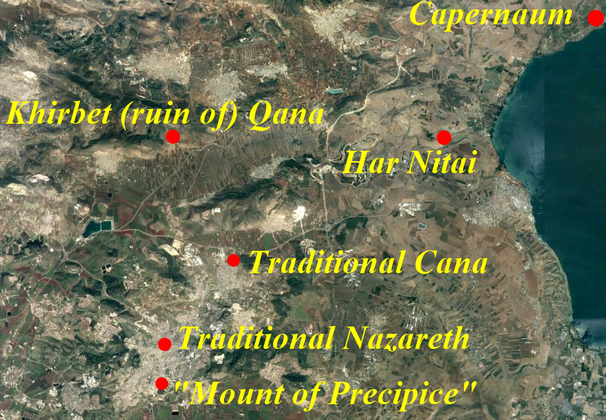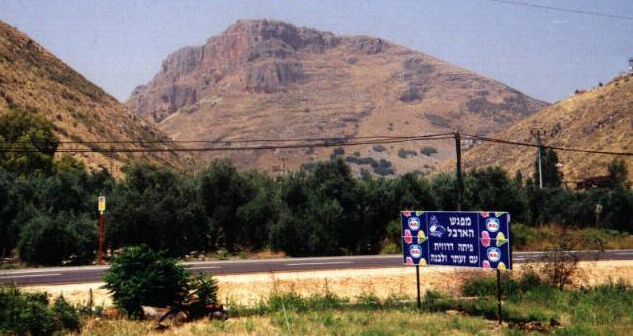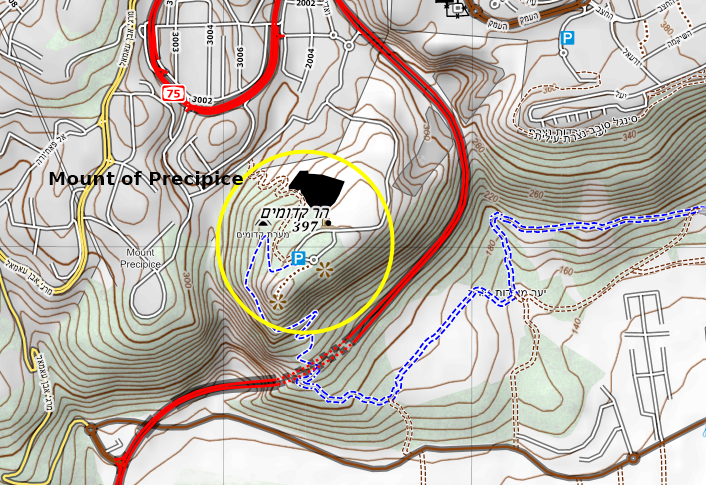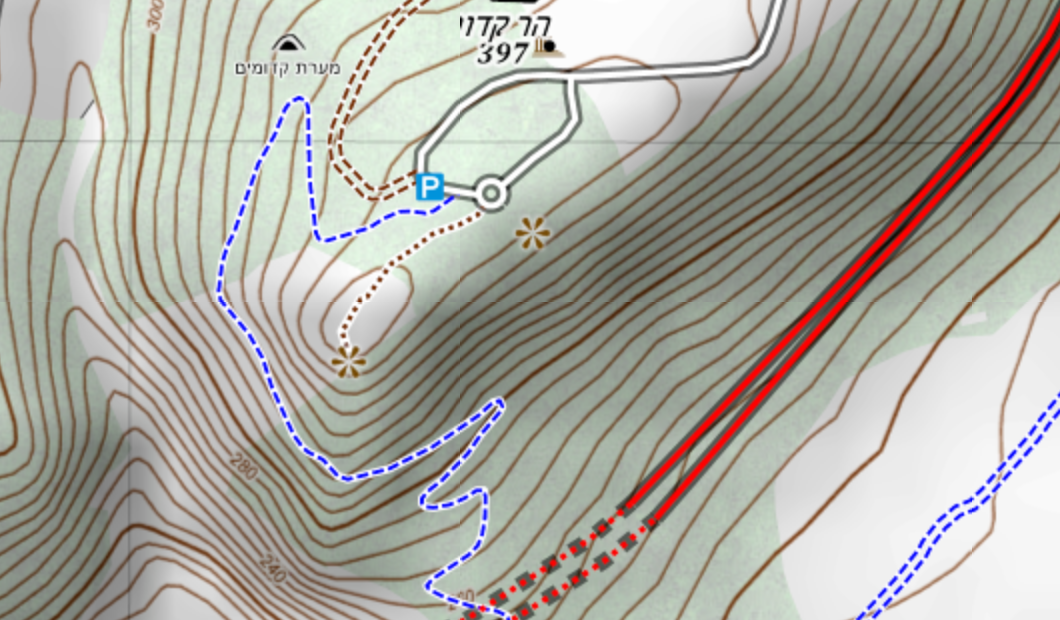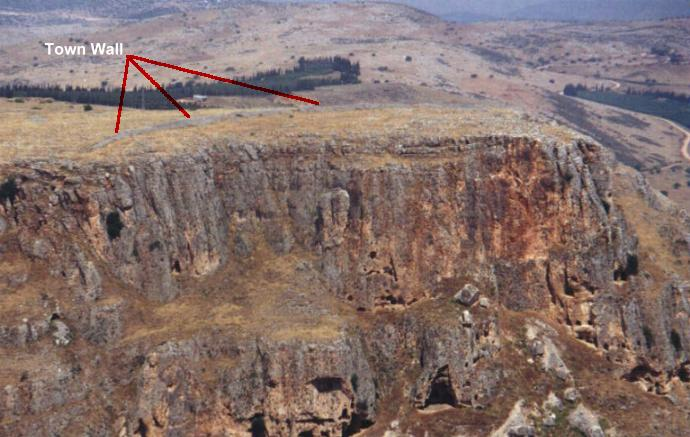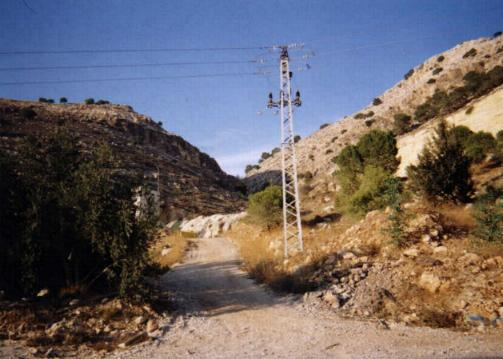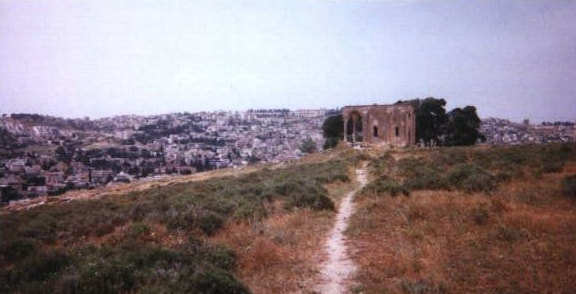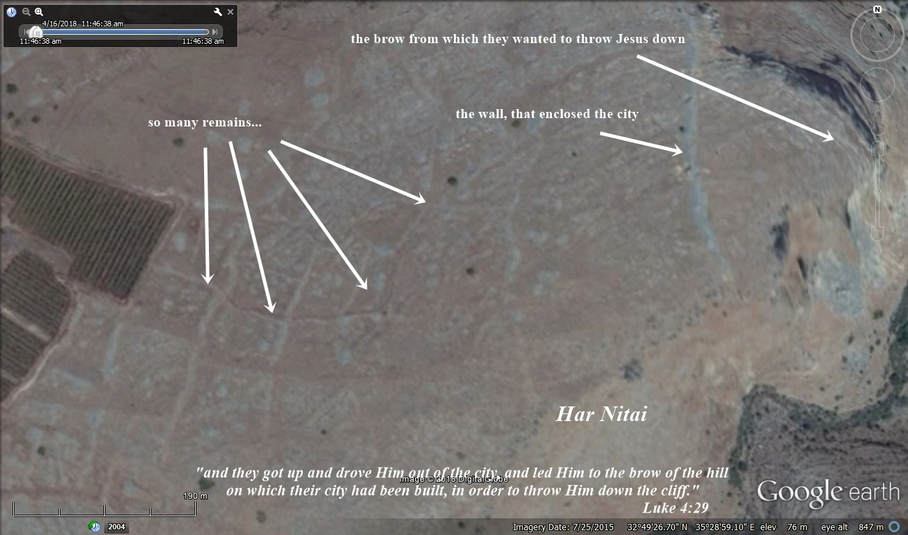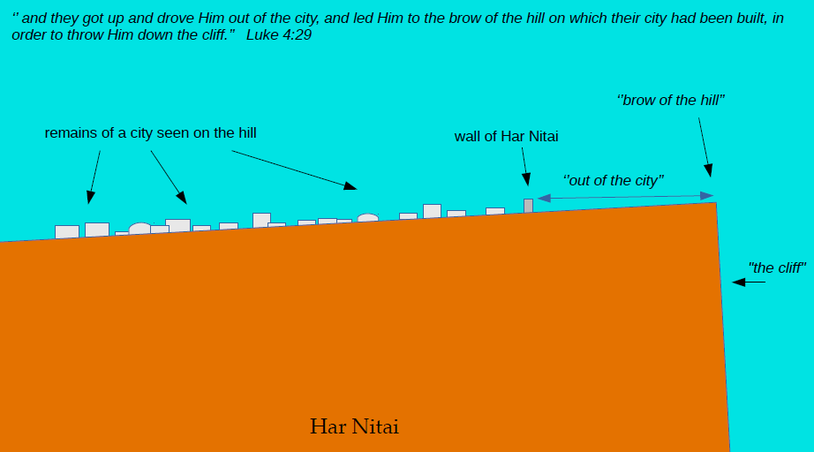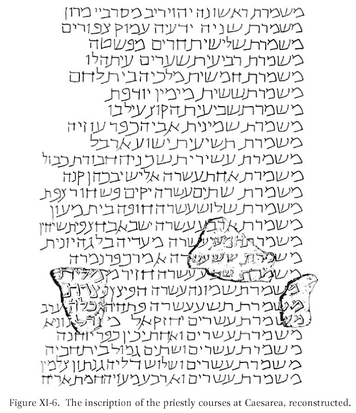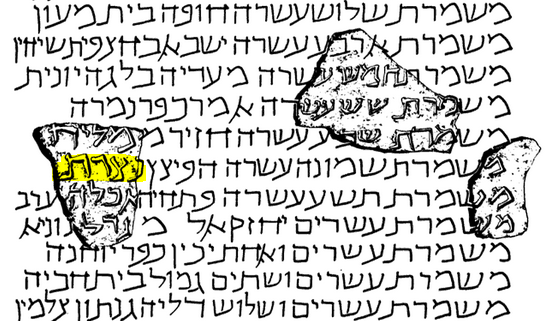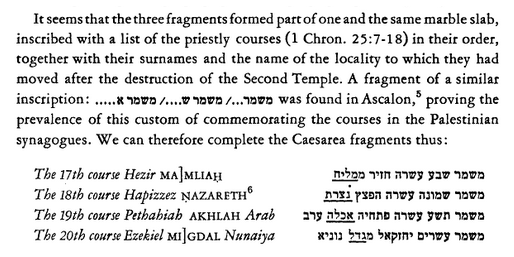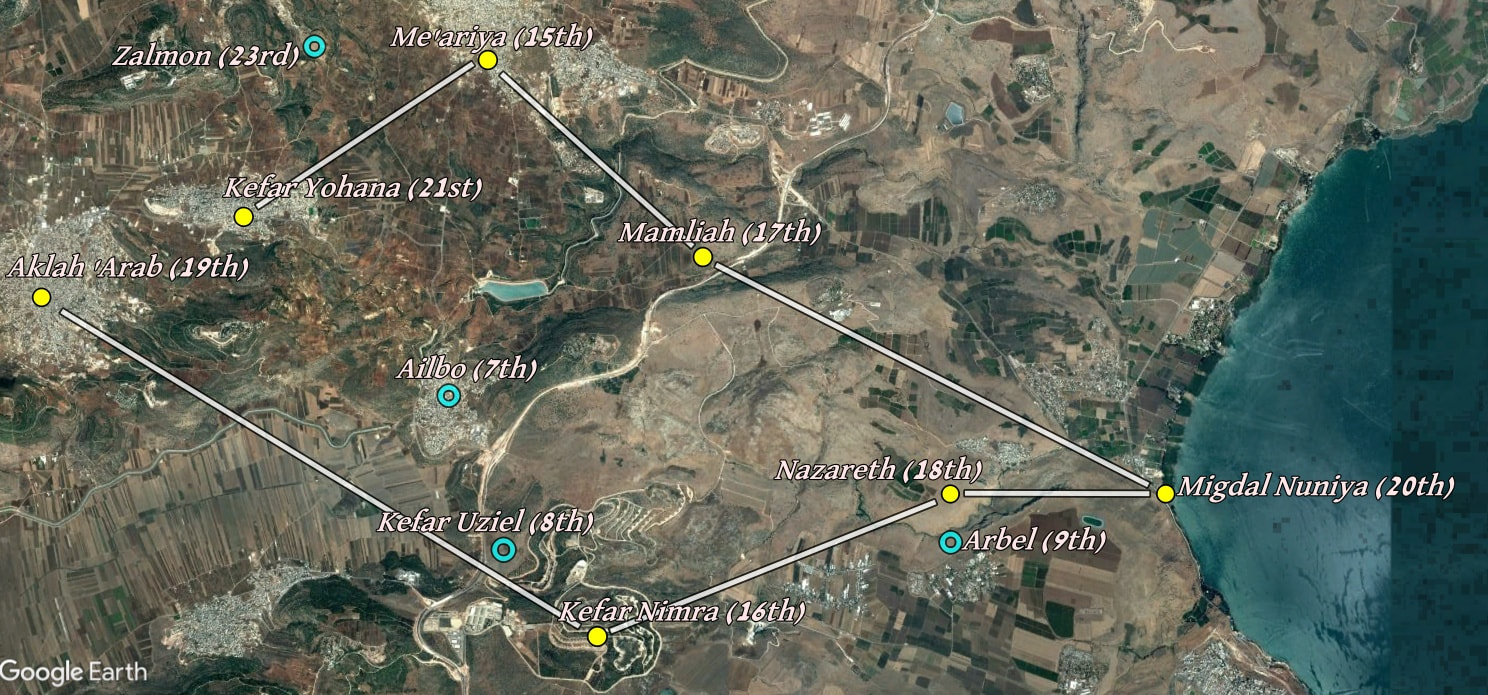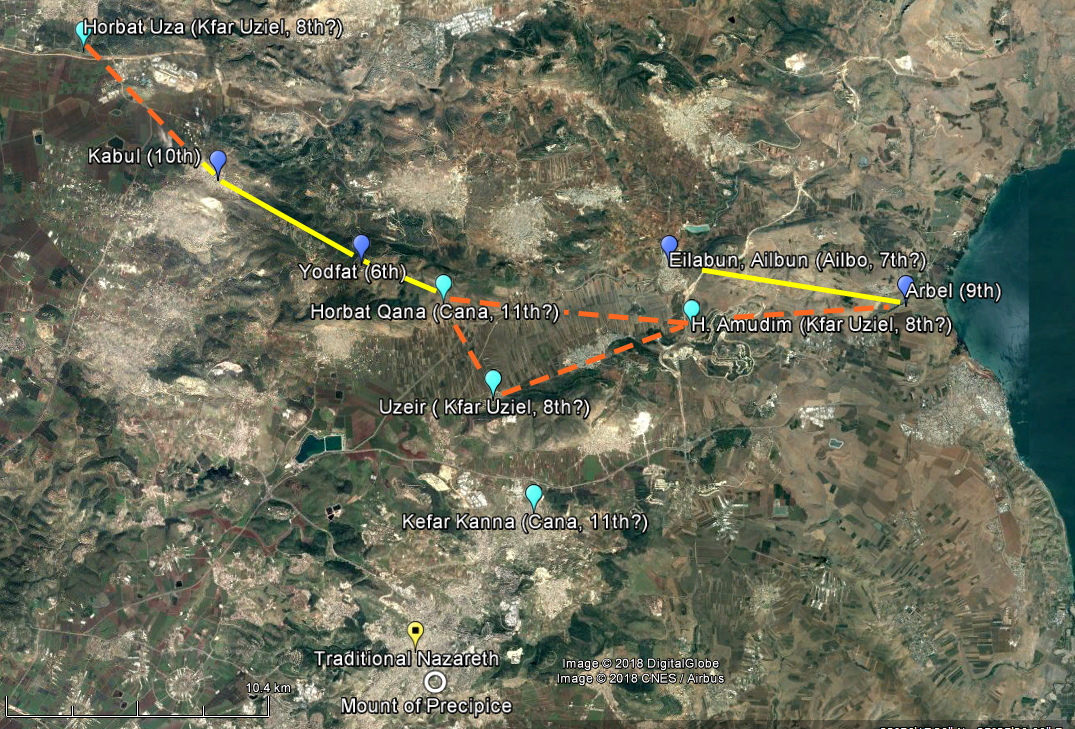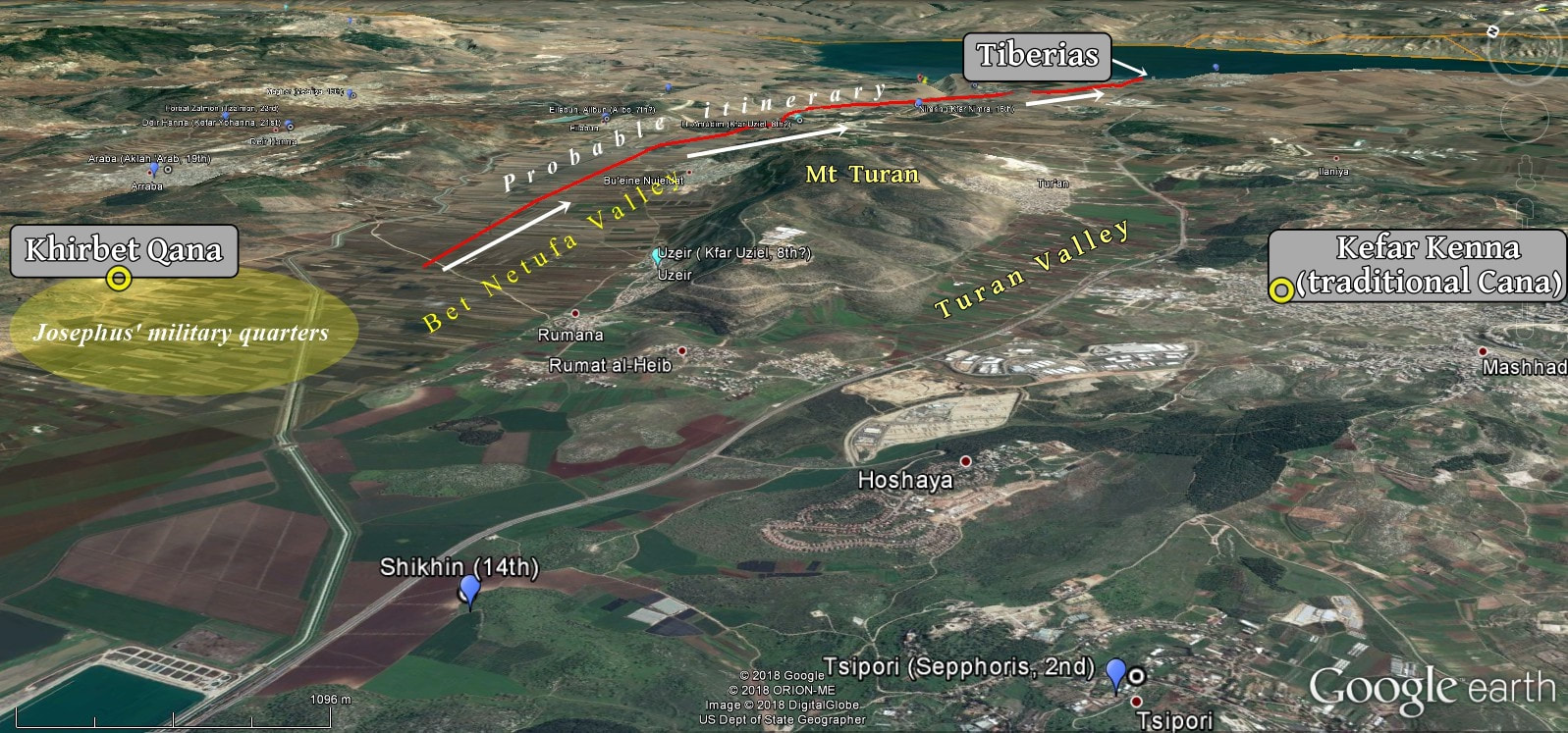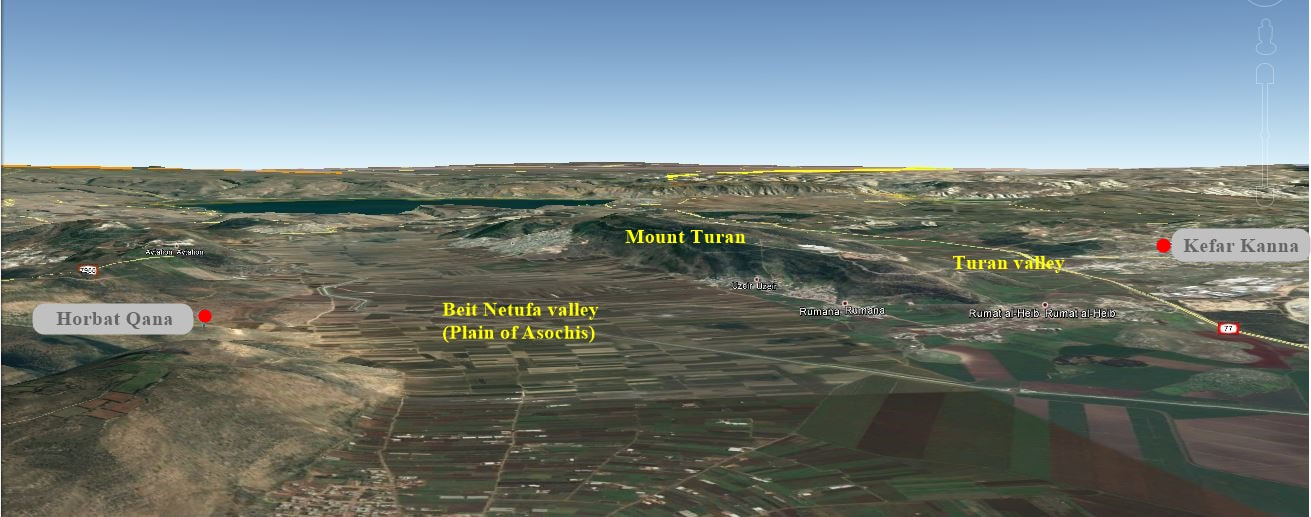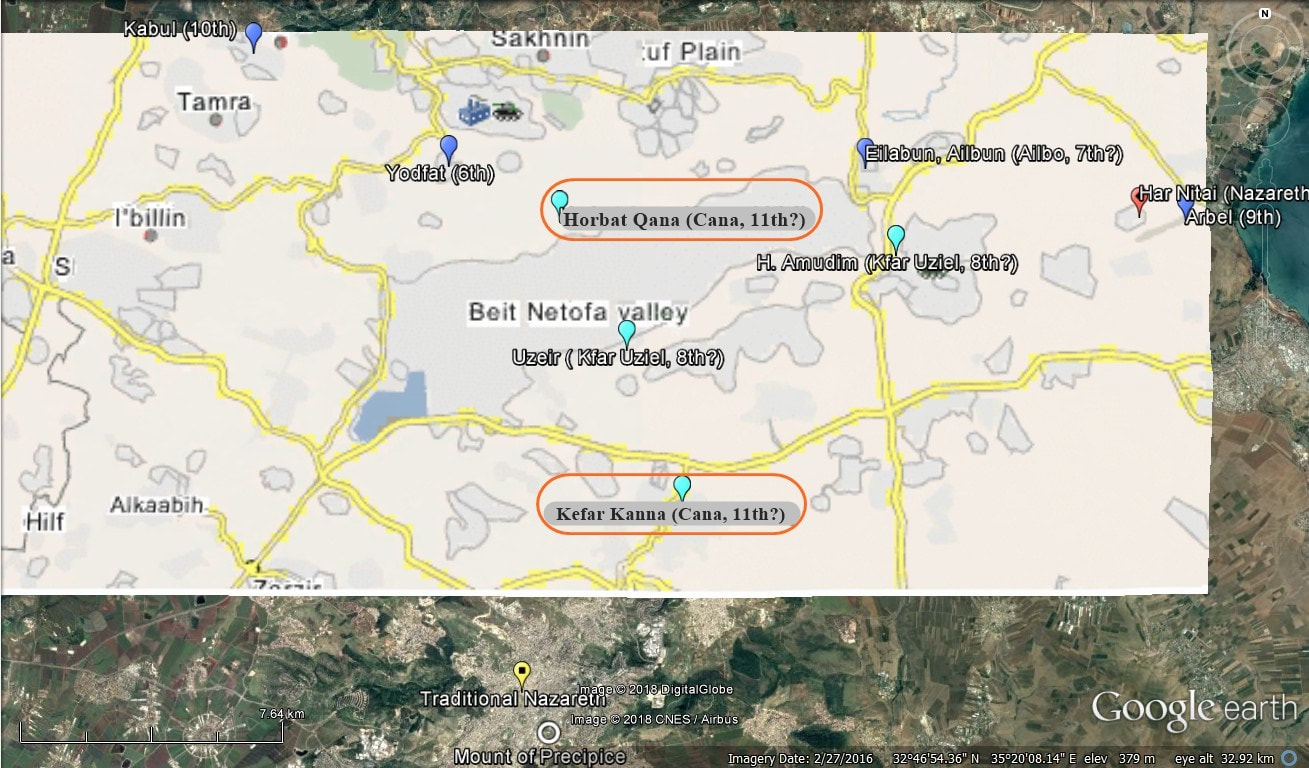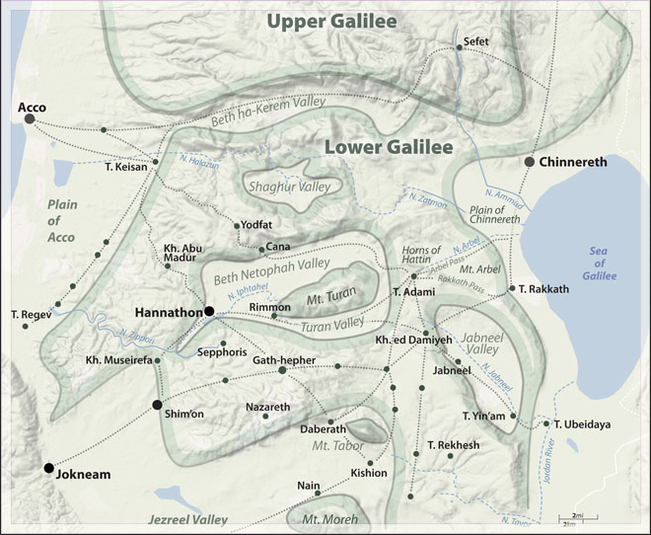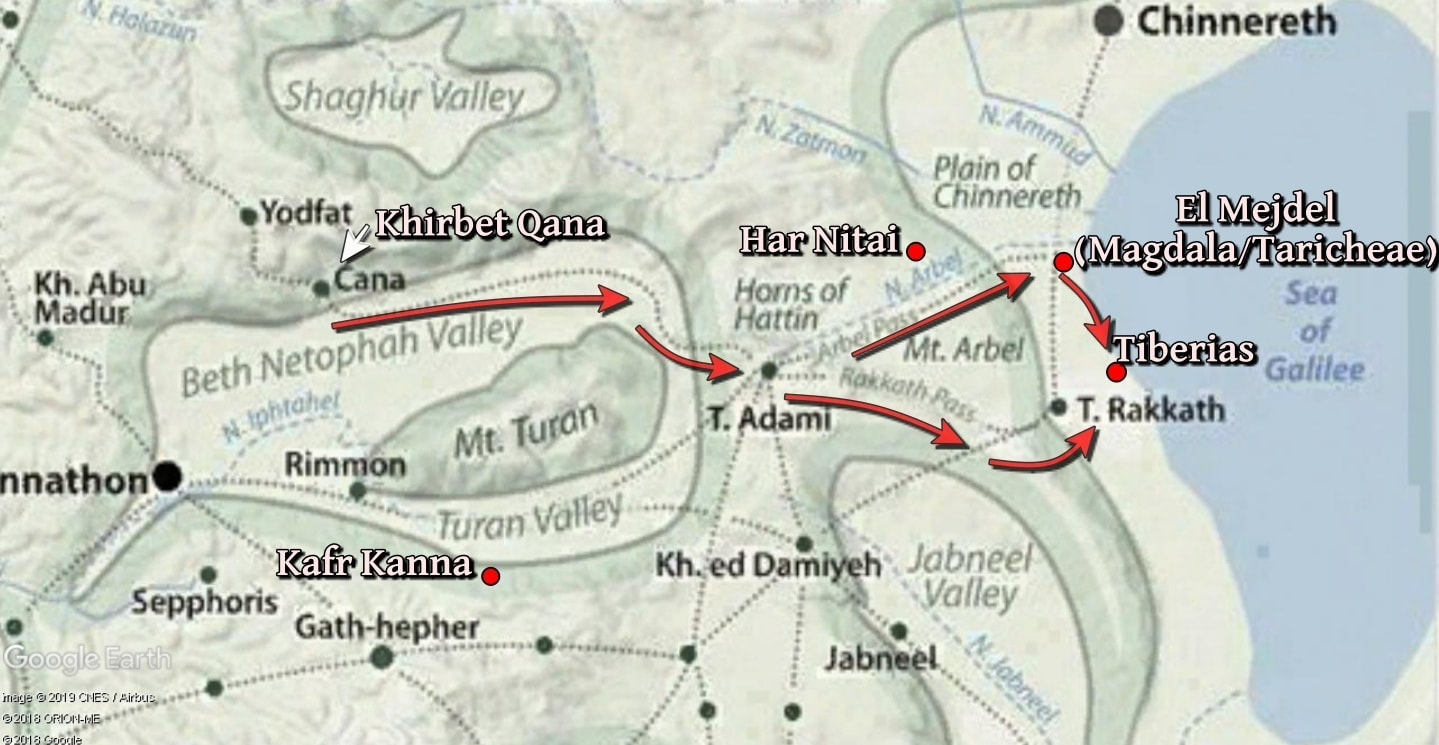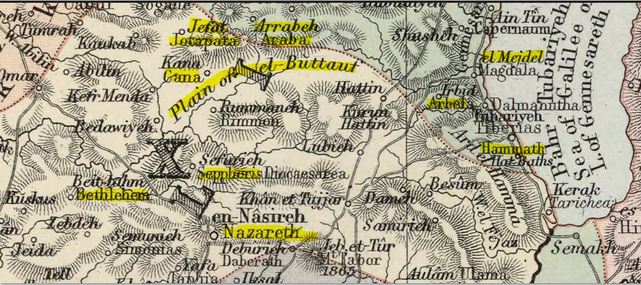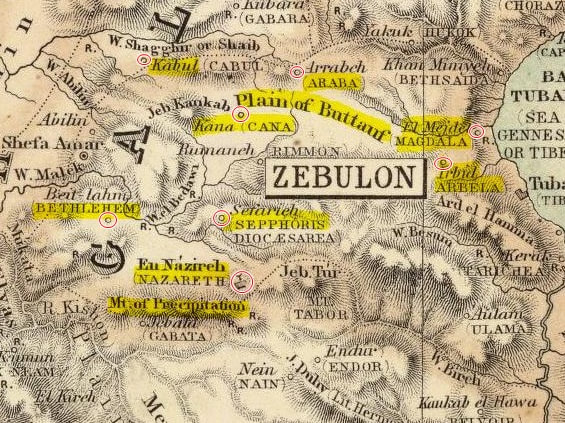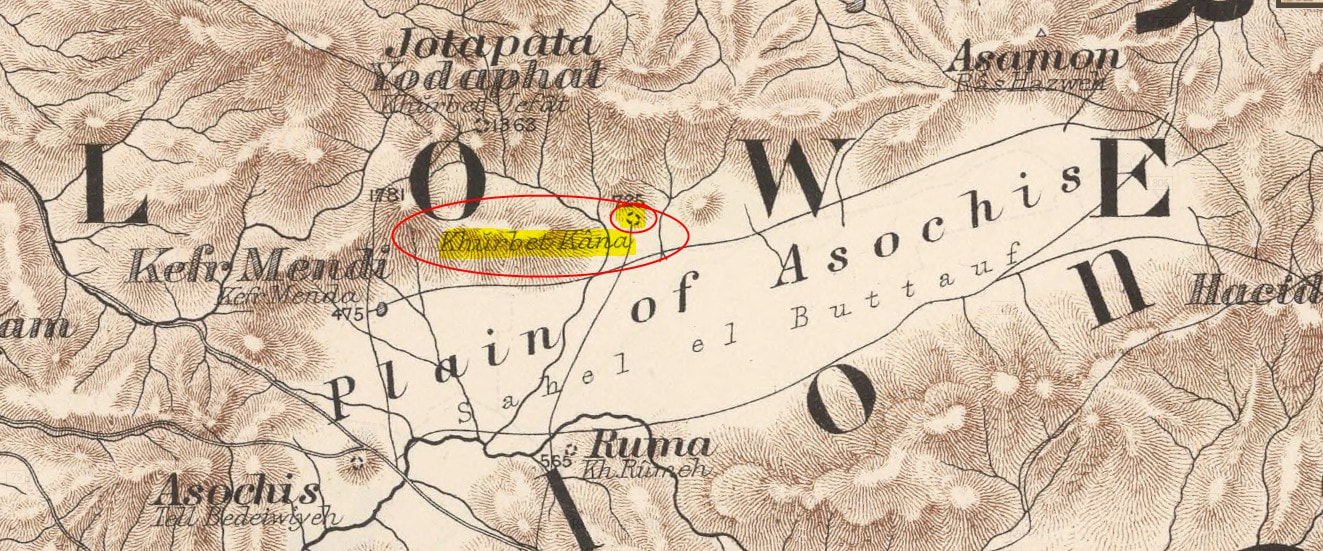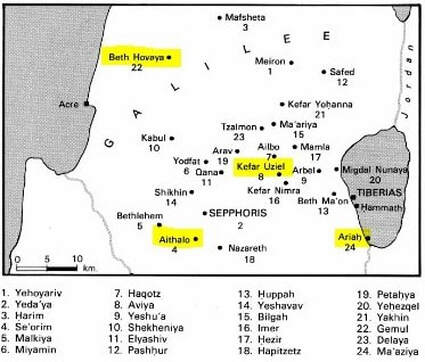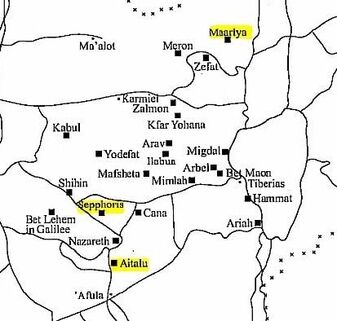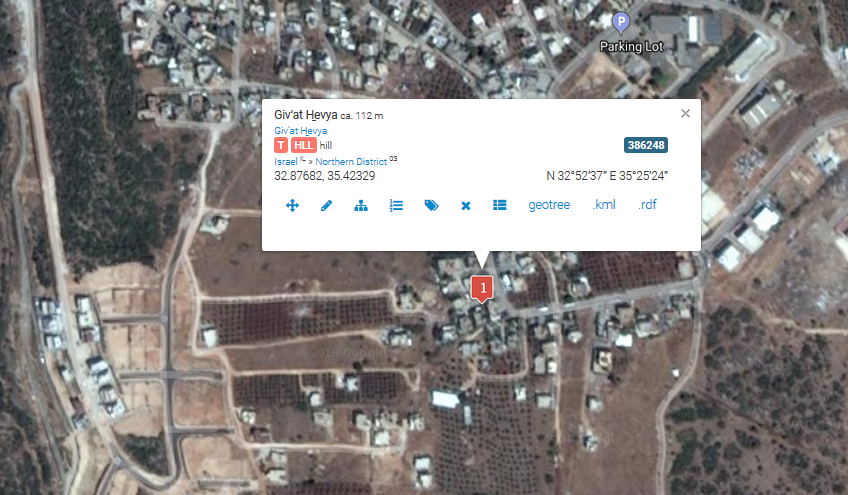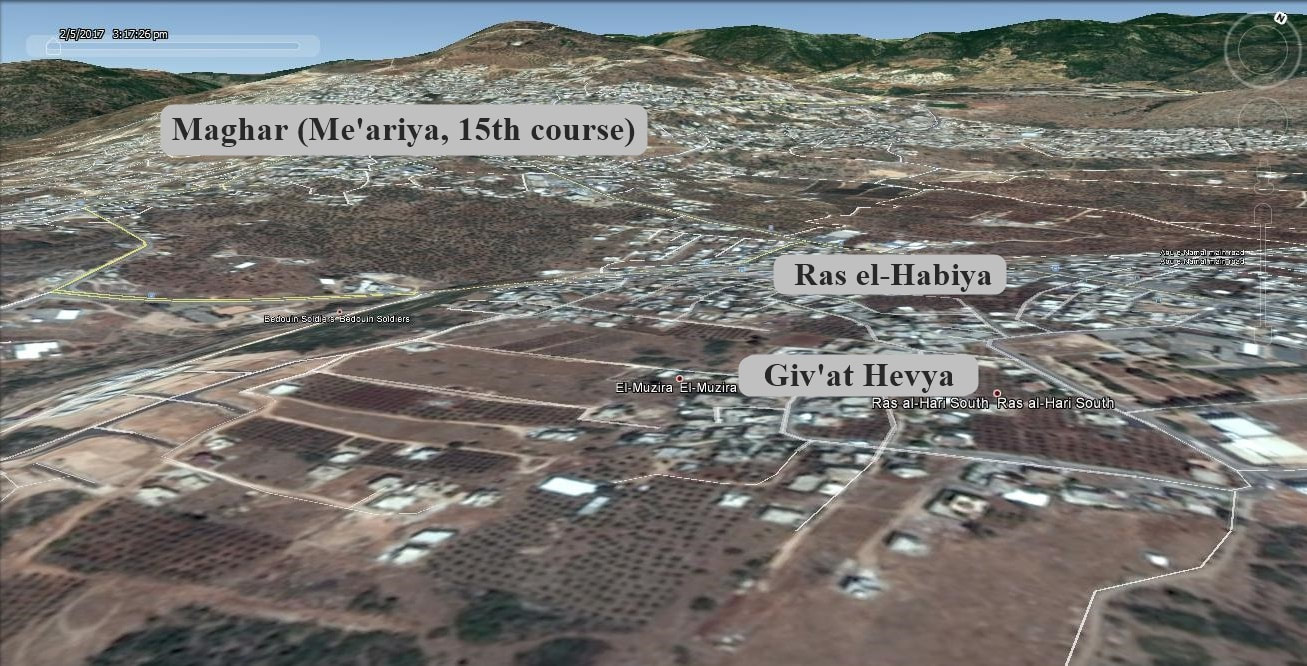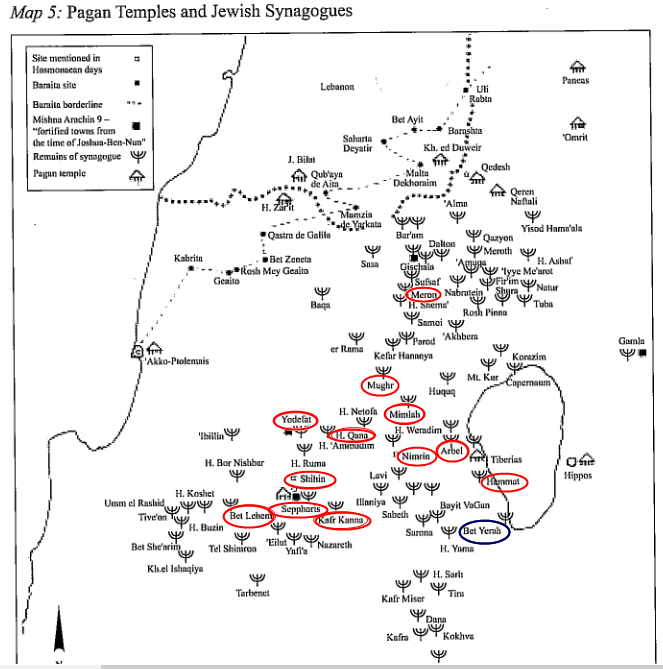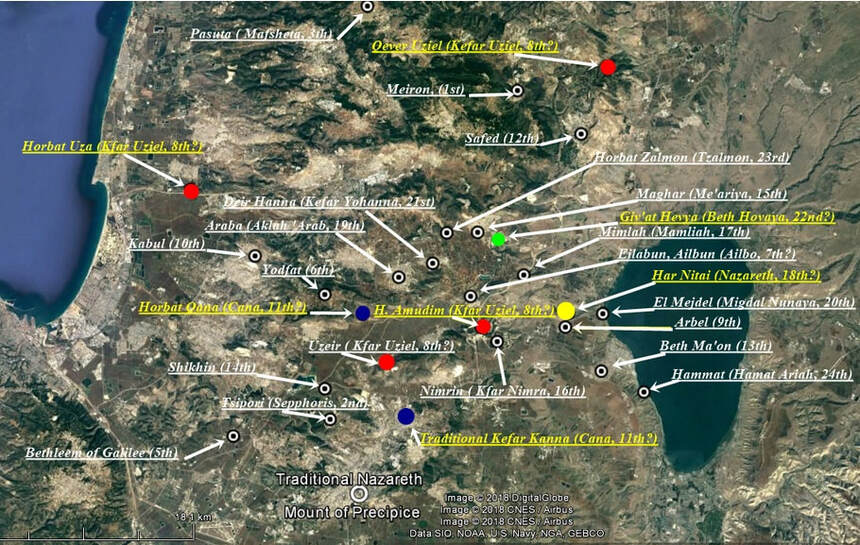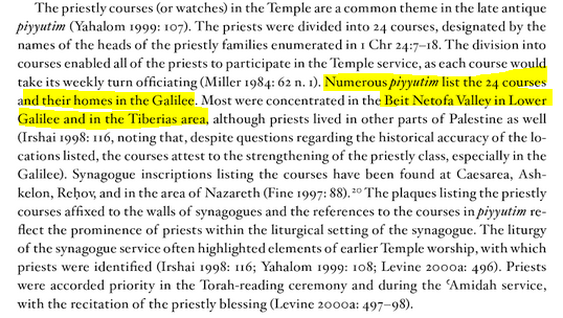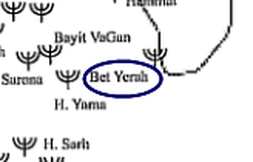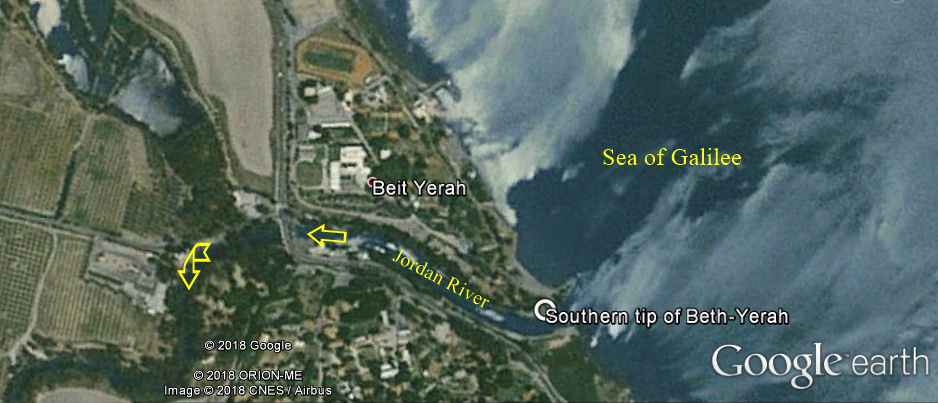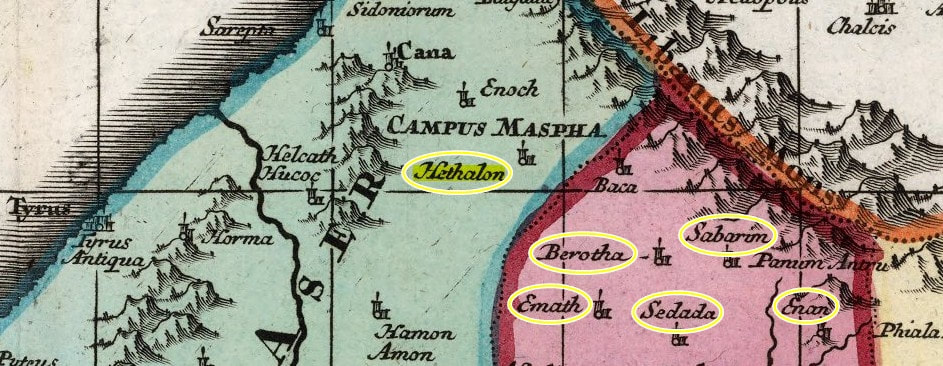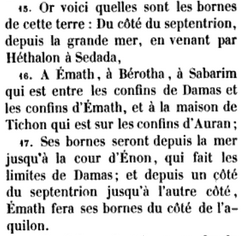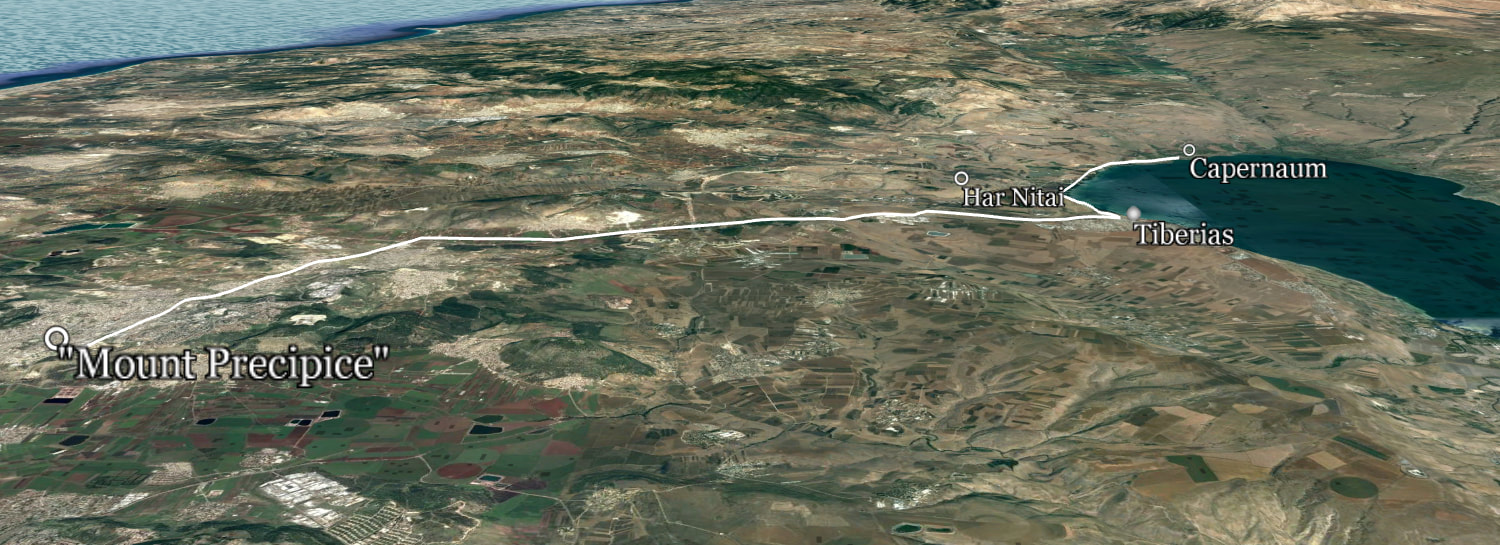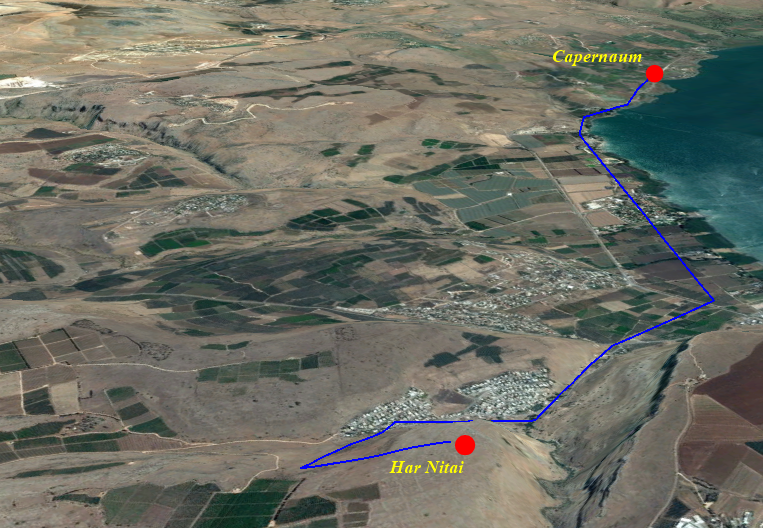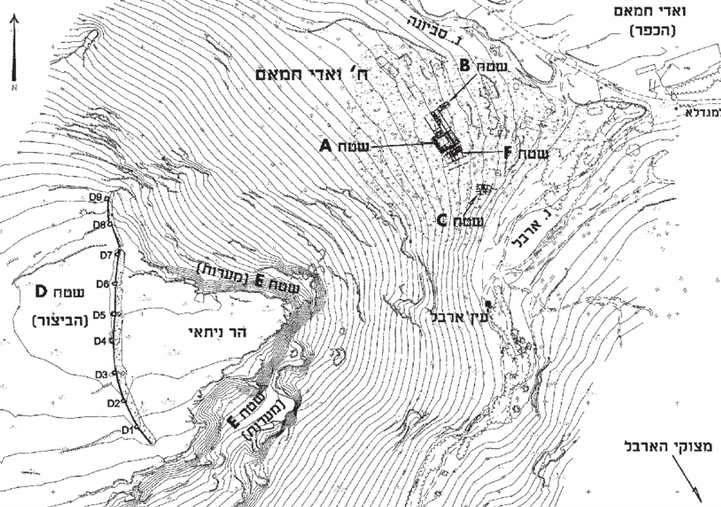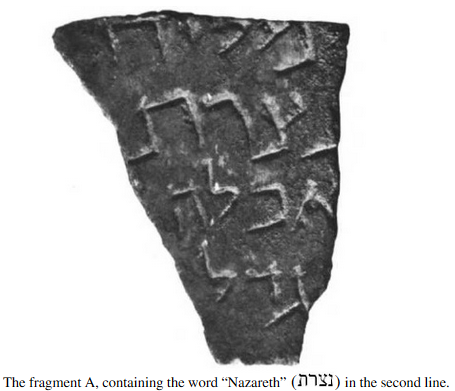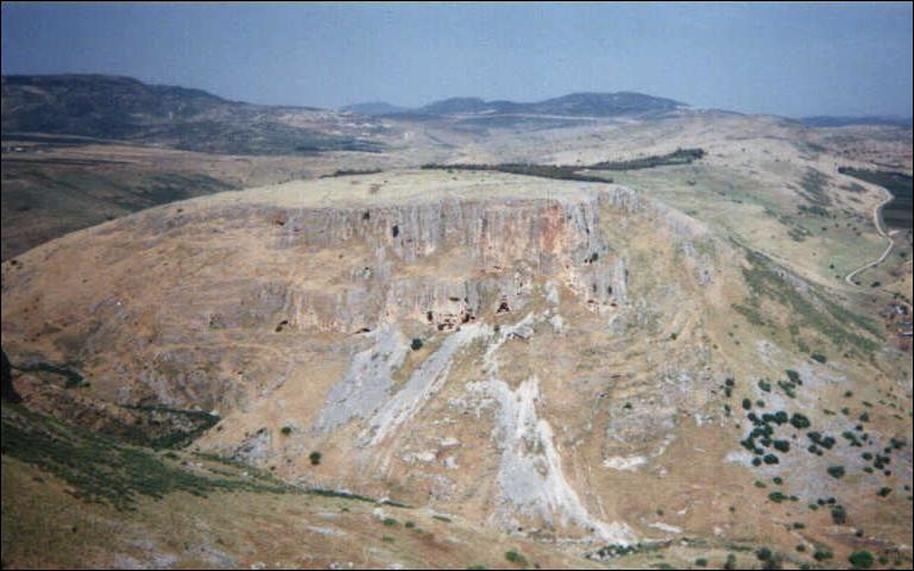H a r N i t a i :
t h e r e l i a b l e c a n d i d a t e
In regard to the geography and topography of Nazareth,
as narrated in the biblical narrative.
......................................................................................................................................................
Har Nitai K.K. (Kevin Kluetz)
Authored by Frederic Parpinel
( Unless otherwise noted, biblical verses are from the New American Standard Bible version (NASB) )
( Photos of Har Nitai and Traditional Nazareth, noted K.K., by courtesy of Kevin Kluetz )
( Unless otherwise noted, biblical verses are from the New American Standard Bible version (NASB) )
( Photos of Har Nitai and Traditional Nazareth, noted K.K., by courtesy of Kevin Kluetz )
°°°°°°°°°°°°°°°°°°°°°°°°°°°°°°°°°°°°°°°°°°°°°°°°°°°
What do the Holy Scriptures say about the geography and topography of Nazareth?
As it was his custom on Sabbath days, Jesus had a visit at the synagogue of Nazareth, His hometown.
He read a text of Isaiah,
"The Spirit of the Lord is upon Me,
Because He anointed Me to preach the gospel to the poor.
He has sent Me to proclaim release to the captives,
And recovery of sight to the blind,
To set free those who are oppressed,
To proclaim the favorable year of the Lord.”
And He closed the book, gave it back to the attendant and sat down; and the eyes of all in the synagogue were fixed on Him.
And He began to say to them, “Today this Scripture has been fulfilled in your hearing.” Luke 4:18-20 (NASB)
They became irritated with him when he reminded them that in the past, the prophet Elijah came to a Sidonite widow, but not to any of the people of Israel, when a famine afflicted the land during three and a half years; and, "The bowl of flour was not exhausted nor did the jar of oil become empty, according to the word of the Lord which He spoke through Elijah." And, as well, in the days of the other man of God, Elishah, only a Syrian man, Naaman, was cleansed from his leprosy, but not any of the Israelites, though there were many leprous in the land. Then Jesus' listeners would remember and acknowledge the more the lack of faith of their own countrymen. (1 Kings 17: 8-16; 2 Kings 5: 1-14)
Then,
" and they got up and drove Him out of the city, and led Him to the brow of the hill on which their city had been built, in order to throw Him down the cliff.
But passing through their midst, He went His way." Luke 4:29,30 (NASB)
According to this last narrative,
- it must be a city built on a hill.
- there must be a brow with a cliff on the edge of this hill.
- there must be a distance between the city and the brow of the hill.
Is the traditional Nazareth in agreement with these points?
Neither the traditional city nor any hill around is built with these characteristics.
Even if any remains of an inhabited place, with its synagogue, would be found on the so-called "Mount of Precipice", this place is not bordered by a cliff. In the 2000's a part of the hill has been cut on the southern side in order to build a road, but no cliff does originally exist there. Here is a topographic map showing that there was no precipice at all:
(This map can be seen in the Israel Hiking Map website. Here is a link, with the coordinates to the Mount of Precipice )
Here are several pictures of the Mount of Precipice area
|
The Mount of Precipice, about a mile (1.5 km) south of the traditional city.
|
A close-up view with the contour lines where they are closer together.
As it is clearly seen, no contour lines converge which would show the verticality of a cliff (there is an elevation change of 10 meters between the lines). Just a slope. |
What about Har Nitai as Nazareth?
Kevin Kluetz, a former US military pilot, does suggest, since years, that Har (Mount) Nitai, next to Mount Arbel, close to the Sea of Galilee, is a good candi-date for what should be the whereabouts and the topography of this Nazareth, the place in which our Lord grew up.
This hill includes the remains of a wall of 286 meters (938 feet) in length, with 9 towers.
In April 1998, he met with Dr. Rudolph Cohen, Israel's Deputy Director of Antiquities, in his office at the Rockefeller Museum in Jerusalem, who told him that the ancient town that was once at the summit of Har Nitai was (still at that time) unidentified and unexcavated.
Nevertheless, since a few years, the wall and its towers have been finally subject to archaeological excavations, but the main plateau has not been searched yet.
Har Nitai K.K.
K.K.
Above and below: a wall, with towers, does separate the remains of a city (not excavated yet) from a cliff.
K.K.
Let's see the relation between Har Nitai and what says the narrative in Scripture, concerning the topography of Nazareth, and compare with the traditional Nazareth's "Mount of Precipice", which is situated about a mile south of the city.
|
K.K.
Traditional Nazareth's nearest cliffs. As K. Kluetz states it, they do not qualify as the "brow of the hill on which their city had been built". |
K.K.
The "Mount of Precipice", with a ruined church. We can see in the background the traditional Nazareth, separated from the hill by a valley. There is not any cliff face at the edge of this hill. |
. . . . and let's have a look, with Luke 4:29 in mind:
Below a Google Earth view of the eastern part of Har Nitai. Notice the remains still to be uncovered. (32°49'28.77"N 35°29'4.82"E)
Google Maps link: Har Nitai
Some archaeological excavations took place in the areas of the wall, and between it and the cliffs of Har Nitai, not on the whole hill. But when we examine an aerial view, we can catch sight of the remains which would reveal interesting finds. The vestiges of a city and its synagogue must be hidden there. Just need new researches on the ground. We can recognize the architecture of an inhabited area. We just have to search again, and everywhere on the site.
There is a cliff, even very impressive, by which anyone would die if thrown down from the summit. And the edge to this cliff is the brow of the hill, as such mentioned in the verse above, the highest point of the whole hill.
The brow with the cliff is outside the main area, as the Scripture clearly states, "(...) drove Him out of the city": the remains of a long wall, with towers, do widely separate the visible remains from the cliff.
One could think that Mount Arbel, which possesses a very impressive cliff as well, would have been Nazareth in times past, but we will see further below a list of 24 priestly localities that indicate that Arbel and Nazareth are two different places, the 9th and the 18th in that list, respectively.
(As well, in Scripture, we know that there was a synagogue in Nazareth:
"And He came to Nazareth, where He had been brought up; and as was His custom, He entered the synagogue on the Sabbath, and stood up to read.".
Luke 4:16
(There are the remains of a synagogue on Mount Arbel as well, in accordance with this 9th locality in the list.)
Knowing that the city of Nazareth was built on a hill, and that the brow with the cliff toward which Jesus was driven was outside the city, it is evident that the whole picture may present a city separated from the brow by a wall, if this brow belongs to the hill "on which their city had been built", and it is what Har Nitai looks like.
I have produced here a graphic description of Har Nitai. (Although the Hebrew הר har does mean mountain, or mount, the meaning of the Greek (archaic) ὄρος oros, in Luke 4:29, is both mountain and hill.)
I have added buildings in place of the visible remains.
A simplified representation of Nazareth as described in the biblical narrative.
The Caesarea Inscription
Now, a significant discovery, the Caesarea Inscription, which would date of the third or fourth century CE, reports 24 priestly courses, with their own localities.
What are these?
First, let's see how King David all along with the Levites Zadok and Ahimelech did manage to give their duties to several priests, in the future temple all along the year, when his son Solomon will have built it. We have the names of 24 priests in the text, and their numerical order.
We see, in the 1st book of Chronicles, § 23, v. 1 and 2,
"Now when David reached old age, he made his son Solomon king over Israel. And he gathered together all the leaders of Israel with the priests and the Levites."
And in chapter 28 of this same book, after that the preparation (seen in Chapter 24 further below) has been done:
"Then King David rose to his feet and said, “Listen to me, my brethren and my people; I had intended to build a permanent home for the ark of the covenant of the Lord and for the footstool of our God. So I had made preparations to build it. But God said to me, ‘You shall not build a house for My name because you are a man of war and have shed blood.' " 1 Chr. 28: 2,3
David had prepared in advance the instructions concerning this agenda at the temple:
"Now the divisions of the descendants of Aaron were these: the sons of Aaron were Nadab, Abihu, Eleazar and Ithamar. But Nadab and Abihu died before their father and had no sons. So Eleazar and Ithamar served as priests. David, with Zadok of the sons of Eleazar and Ahimelech of the sons of Ithamar, divi-ded them according to their offices for their ministry."
. . . . .
"Now the first lot came out for Jehoiarib, the second for Jedaiah, the third for Harim, the fourth for Seorim, the fifth for Malchijah, the sixth for Mijamin, the seventh for Hakkoz, the eighth for Abijah, the ninth for Jeshua, the tenth for Shecaniah, the eleventh for Eliashib, the twelfth for Jakim, the thirteenth for Huppah, the fourteenth for Jeshebeab, the fifteenth for Bilgah, the sixteenth for Immer, the seventeenth for Hezir, the eighteenth for Happizzez, the nine-teenth for Pethahiah, the twentieth for Jehezkel, the twenty-first for Jachin, the twenty-second for Gamul, the twenty-third for Delaiah, the twenty-fourth for Maaziah. These were their offices for their ministry when they came into the house of the Lord according to the ordinance given to them through Aaron their father, just as the Lord God of Israel had commanded him." 1 Chr 24: 1-3; 7-19
The names of these priests were kept across all generations as names of priestly divisions, not as the very names of the priests in duty. They had to officiate in the Temple, twenty-four divisions all along the year, every priestly course in its own time, in numerical order.
Then, after the destruction of the second Temple,
" Following the Temple's destruction at the end of the First Jewish Revolt and the displacement to the Galilee of the bulk of the remaining Jewish population in Judea at the end of the Bar Kochva Revolt, Jewish tradition in the Talmud and poems from the period record that the descendants of each priestly watch established a separate residential seat in towns and villages of the Galilee, and maintained this residential pattern for at least several centuries in anticipation of the reconstruction of the Temple and reinstitution of the cycle of priestly courses." Wiki/Priestly Divisions
Now, parts of the Caesarea inscription have been interpreted, especially by the Jewish scholar Samuel Klein:
Nazareth The Caesarea Inscription And The Hand Of God - by Enrico Tuccinardi - Translated from the French by Rene Salm
"The fragment A of the Caesarea inscription touch on four lines of text. When we compare that text with the four lines above we find an absolute identity as regards the letters appearing on the fragment. This shows that Avi Yonah did not take any liberties in interpreting the inscription, simply because the recons-truction is not his at all — it is that of Samuel Klein set forth more than twenty years before the discovery of the Caesarea inscription."
The list of 24 priestly courses, of which each priest is assigned to a locality.
Ancient Synagogues - Archaeology and Art: New Discoveries and Current Research de Rachel Hachlili
Ancient Synagogues - Archaeology and Art: New Discoveries and Current Research de Rachel Hachlili
The first priestly course Jehoiarib 'Messarbey' Meiron,
The second priestly course Jed'aiah 'Amok' Sepphoris,
The third priestly course Harim Mafshetah,
The fourth priestly course Se'orim Aithalo,
The fifth priestly course Malchijah Bethleem,
The sixth priestly course Mijamin Yodfat,
The seventh priestly course Hakkoz Ailbo,
The eighth priestly course Abijah Kefar Uziel,
The ninth priestly course Jeshuah Arbel,
The tenth priestly course Shecaniah Kabul,
The eleventh priestly course Eliashib Kohen Qana,
The twelfth priestly course Pashhur Safed,
The thirteenth priestly course Huppah Beth Ma'on,
The fourteenth priestly course Jeshebeab Shihin,
The fifteenth priestly course Bilgah Me'ariya,
The sixteenth priestly course Kefar Nimra,
The seventeenth priestly course Hezir Mamliah,
The eighteenth priestly course Hapizzez (Aphses) Nazareth,
The nineteenth priestly course Pethahiah Aklah 'Arab,
The twentieth priestly course Jehezekel Migdal Nuniya, Magdala,
The twenty-first priestly course Jachin Kefar Yohana,
The twenty-second priestly course Gamul Beth Hovaya,
The twenty-third priestly course Delaiah Tzalmon,
The twenty-fourth priestly course Maaziah Hamat Ariah.
These are the same names of priestly divisions as in 1 Chr: 24: 7-19, (but in time of Solomon no one of them was assigned to any city).
(As for the 5th course, we know that there is a locality named Bethleem in the Galilee.)
The second priestly course Jed'aiah 'Amok' Sepphoris,
The third priestly course Harim Mafshetah,
The fourth priestly course Se'orim Aithalo,
The fifth priestly course Malchijah Bethleem,
The sixth priestly course Mijamin Yodfat,
The seventh priestly course Hakkoz Ailbo,
The eighth priestly course Abijah Kefar Uziel,
The ninth priestly course Jeshuah Arbel,
The tenth priestly course Shecaniah Kabul,
The eleventh priestly course Eliashib Kohen Qana,
The twelfth priestly course Pashhur Safed,
The thirteenth priestly course Huppah Beth Ma'on,
The fourteenth priestly course Jeshebeab Shihin,
The fifteenth priestly course Bilgah Me'ariya,
The sixteenth priestly course Kefar Nimra,
The seventeenth priestly course Hezir Mamliah,
The eighteenth priestly course Hapizzez (Aphses) Nazareth,
The nineteenth priestly course Pethahiah Aklah 'Arab,
The twentieth priestly course Jehezekel Migdal Nuniya, Magdala,
The twenty-first priestly course Jachin Kefar Yohana,
The twenty-second priestly course Gamul Beth Hovaya,
The twenty-third priestly course Delaiah Tzalmon,
The twenty-fourth priestly course Maaziah Hamat Ariah.
These are the same names of priestly divisions as in 1 Chr: 24: 7-19, (but in time of Solomon no one of them was assigned to any city).
(As for the 5th course, we know that there is a locality named Bethleem in the Galilee.)
Journal Article
A List of Priestly Courses from Caesarea
M. AVI-YONAH
Israel Exploration Journal
Vol. 12, No. 2 (1962)
A List of Priestly Courses from Caesarea
M. AVI-YONAH
Israel Exploration Journal
Vol. 12, No. 2 (1962)
We can see the name Nazareth ( נצרת ) in the inscription, as we will see below.
This inscription was dated to the third or fourth century by Avi-Yonah, Professor of Archaeology at the University of Jerusalem and Director of the excavation in Caesarea.
Here are some of his statements, in his Israel Exploration Journal (same article from Avi-Yonah):
This inscription was dated to the third or fourth century by Avi-Yonah, Professor of Archaeology at the University of Jerusalem and Director of the excavation in Caesarea.
Here are some of his statements, in his Israel Exploration Journal (same article from Avi-Yonah):
Groupings of priestly courses
On this map below, these seven localities, Me'ariya (modern Maghar), Nimra (modern Nimrim), Mamliah (modern Mimlah), Nazareth (here Har Nitai, instead of the traditional city), Aklah 'Arab (modern Araba), Migdal Nuniya (archaeological site El Mejdel), and Kefar Yohana (modern Deir Hanna), which follow each other in the list (the 15th, 16th, 17th, 18th, 19th, 20th, and 21st course, respectively), are almost on a same plane on the map.
(Whereabouts of each of the 24 localities of the list, see here: 24 Priestly Divisions - See Clusters of Priestly Courses article)
Har Nitai, proposed as the 18th course Nazareth, is well included in the cluster.
We can notice the traditional Nazareth with the 'Mount of Precipice', far south from this area:
We can see other places gathered in numerical order:
- the 6th course: Yodfat,
- the 7th: Ailbo,
- the 8th: Kefar Uziel (although we read Kefar Uziel in the translated list above, the Hebrew list reads Kefar Uziah),
- the 9th: Arbel,
- the 10th: Kabul,
- and the 11th: Cana
(orange dotted lines are the relations (not in any order) between the different theoretical sites of Kfar Uziel and other cities of the cluster)
'Kefar Kanna', northeast of the traditional Nazareth, is the popular Cana. Horbat (or Khirbet, Khurbet) Qana, seen here, close to Yodfat, is much more appropriate to the Cana in the Galilee known of Flavius Josephus. (See Cana article)

Ailbo, the 7th course, would be Ailbun, seen on ancient maps, known as the modern city Eilabun, or Ailabu (See Ailbo article)
Wiki: Eilabun
"An Israeli theory is that the place was built on the ancient site of "Ailabu" (Hebrew: עַיְלַבּוּ), a possible variation of the name Ein Levon.
Eilabun is mentioned as one of the cities associated with one of the twenty-four priestly divisions, the residence of the priestly clan known as Haqos.
A stone inscription mentioning the town was discovered in Yemen by orientalist, Walter W. Muller, in 1970, and is believed to have been part of a ruined synagogue, now turned mosque."
Would it be Ailbo?
As for Kefar Uziel (village of Uziel), the 8th course, we read Kefar Uziah, instead of Kefar Uziel, on the original list:
If Kfar Uziel (or Kfar Uziah?) is not related to Qever Uziel, which means "tomb of Uziel", a
ruin been located at 5 km north of Safed, we have Khirbet (the ruin of) Amudim, west of
Arbel, which has been proposed as well. There is also Horbat Uza, westwards, another theo-retical place, and we can see Uzeir, as well, in the Beth Netofa valley. Now, if we read Kfar
Uziah in the list instead of Kfar Uziel, a Yemeni stone inscription has been found with the eighth course as such: " Aviah ‘Iddo, Kefar ‘Uzziel, the (eighth) ward " - See article
If the 8th course, Kefar Uziel, is where the tomb of Uziel is located, 5 km north of Safed, there's today no trace of a village, no more than the remains of
a synagogue in that place.
Concerning Cana, the 11th course, an interesting dissertation by J. Carl Laney: The Identification of Cana of Galilee (pdf), which does accredit Khirbet Qana as the Cana of Galilee in which Jesus changed water into wine:
" [The 1st-century historian Josephus] refers to Cana as his military quarters, and then later designates the Plain of Asochis, that is the Bet Netufa Valley, as the place of his quarters." [words in brackets mine]
(See Cana article)
Bet Netufa Valley, called the Plain of Asochis by Josephus, is north of this hill, Mt. Turan, as shown in this (eastward) representation. Josephus could have his quarters here, in the vicinity of Khirbet (or Horbat) Qana. An itinerary (around 13 miles/21 km) is shown here, towards Tiberias, though he could pass through the south of the hill, as well, in the Turan Valley. These two valleys are separated from each other by Mt Turan. The traditional Kefar Kanna is not part of the Bet Netufa Valley; it is just close to the border of the Turan Valley. Here, Shikhin, the 14th course, is the ancient city Asochis (see further below).
( Bet, or Beth, in Hebrew - Beit, in Aramaic, means "house" )
Another view (eastward). The valley in which Josephus had his quarters is quite wide.
( Bet, or Beth, in Hebrew - Beit, in Aramaic, means "house" )
Another view (eastward). The valley in which Josephus had his quarters is quite wide.
Below is a map overlaid on Google Earth, with the Beit Netufa (or Beit Netofa) Valley (in clear blue).
Josephus was stationed at Cana, in the Beit Netofa Valley. We can see that Khirbet (Horbat) Qana is on the northern border of this valley. The traditional Kefar Kanna, southwards, is not in this vicinity. (The overlay is correctly done.)
Below a map with mentions of the two valleys, Beth Netophah and Turan:
We can notice that the only Cana mentioned on this map is Khirbet Qana, southeast of Yodfat, on the north border of the Beth Netufa (here Beth Netophah) Valley. As on several ancient maps, there's no mention of Kefar Kanna, to the northeast of the traditional Nazareth.
Below, a part of this same map, with Josephus' probable itinerary (red arrows) from his Cana quarters toward Tiberias. (I have added the traditional Kefar (or Kafr) Kanna). Perhaps Josephus might have used a track, or ancient road, as shown here by the grey dotted line that passes by Khirbet Qana (Cana) and along the valley through to T. Adami, reaches El Mejdel (Magdala) by the Arbel Pass, between Har Nitai and Mt Arbel, or T. Rakkath by the Rakkath Pass, and then, Tiberias.
(as a reminder, Kefar, or Kafr, Kefr = village; Khirbet, or Horbat = ruin.)
Below, a part of this same map, with Josephus' probable itinerary (red arrows) from his Cana quarters toward Tiberias. (I have added the traditional Kefar (or Kafr) Kanna). Perhaps Josephus might have used a track, or ancient road, as shown here by the grey dotted line that passes by Khirbet Qana (Cana) and along the valley through to T. Adami, reaches El Mejdel (Magdala) by the Arbel Pass, between Har Nitai and Mt Arbel, or T. Rakkath by the Rakkath Pass, and then, Tiberias.
(as a reminder, Kefar, or Kafr, Kefr = village; Khirbet, or Horbat = ruin.)
It is quite clear that if Josephus refers both to Cana and to the Plain of Asochis (Beth Netophah valley) as his military quarters, we are far away from the traditional Kefar Kanna (9 km / 5.5 miles from Khirbet Qana as the crow flies), which is in the south border of the Turan valley.
The Beth Netophah valley, called the Plain of Asochis by Josephus, bears the name of Sahel (Plain) el Buttauf, as well. The village of Asochis is Shikhin (or Shihin), the 14th priestly course, as seen before.
Localizations
|
With the list of 24 divisions.
Here the 4th course Aithalo (or Aithalu) is shown in the south of the region, and to the west of the traditional Nazareth; and Beth Hovaya, the 22nd, in the northwest. Kefar Yohanna being the present-day Deir Hanna, it is misplaced here as well. |
Here, Aithalo (Aitalu in the map) is also in the south, but located to the south of the modern Nazareth. Mafsheta, the 3rd course, misplaced, is situated here to the west of the Sea of Galilee when it is situated to the northwest in the other map. Mamla (Mimlah), the 17th, is situated in a different place as well. Kefar Yohanna is correctly placed. |
- Hamat Ariah, the 24th course, is sometimes seen close to or located at Beth-Yerah. 'Ariah' ( אריח ) and 'Yerah' ( ירה ) have two different spellings, but if a relationship is seen between these two, then Beth-Yerah would be Hamat Ariah. Now, Hamat Ariah can be the present Hammath in the vicinity of Tiberias.
- Aithalu (or Aithalo), the 4th course, is seen in the south, but it might be Hethalon, in the north, as we will see further below; and we will see, as well, that according to an ancient text, it must be the most northern city among the 24 of the list of priestly courses.
- As for the 5th course, Bethleem, as we have seen above, we know that there is a locality named Bethleem in the Galilee.
- Ailbo, the 7th course, would be Ailbun, seen on ancient maps, known as the modern city Eilabun, or Ailabun.
- Kefar Uziel, (Kefar Uziah?) the 8th course; at least three localizations are proposed: Horbat Uza, Horbat Amudim, and Qever Uziel. (Qever means 'tomb'; Kefar means 'village'). There is Kefar Uzeir, in the Beit Netofa valley, as well.
- Cana, the 11th course; two propositions: Khirbet Qana and the traditional Kafr Cana.
- The 14th course, Shihin, or Shikhin, is situated 1,5 mile north of Tsipori (Sepphoris, the 2nd course). It is an archaeological site. It is the city Asochis, as seen above, known of Josephus.
- The 17th course, Mamliah, is Mimlah.
- The 20th course, Migdal Nuniya (or Nunaiya, Nunayya) is Magdala, the actual El Mejdel, southeast of the modern Migdal. (The city Magdala is not cited in Scripture, only 'Mary Magdalene'. Some biblical versions do not respect the correct translation.)
- Kefar Yohanna, the 21st course, would be the modern Deir Hanna.
- Beth Hovaya, the 22nd course, is not localized with certainty, but, as seen above, according to Lee I. Levine, is situated north of the Galilee, all along with Safed, Meiron, and Mafsheta. Now, not in this northern area, but around the first cluster seen further above, I have seen Giv'at Hevya, a hill close to the Druze/Arab town Maghar, which is Me'ariya the 15th course, and to the Arab place Ras el-Habiya, which has similar phonetics to Hevya.
See my article about Beth Hovaya, in the 24 Priestly Divisions page.
Geonames: Giv'at Hevya, a hill close to Me'ariya, the 15th course:
Giv'at Hevya (N 32°52′37″ E 35°25′24″) and Ras el-Habiya (32°52'53.50"N 35°25'19.48"E ) are the same hill, near Maghar.
If traces of an ancient synagogue would be found here, or in nearby Ras el-Habiya (though a present-day Arab place), then we would enclose the cities in their numerical order from the 15th through the 23rd course into the same cluster, with Har Nitai as Nazareth.
Below, I have circled in this map the localities known as belonging to the 24 courses, with the two candidates for Cana, the 11th course (the traditional Kafr Kanna, close to Sepphoris, and Khirbet Qana, between Yodfat and Mimlah.) I haven't circled the traditional Nazareth.
In blue, I have circled Beth-Yerah, which wouldn't belong to the 24 localities in the list, but we will further speak about it.
The names in yellow are theoretical proposals for Kefar Uziel (red dots), Cana (blue dots), my suggestion
for Beth Hovaya, the present-day Giv'at Hevya (green dot), and Har Nitai as Nazareth (yellow dot), proposed by Kevin Kluetz.
Aithalo, the 4th course, is in the northern part of the country and close to the border. If it is Hethalon,
as we can see it in ancient maps, it is not easy to properly overlay and then localize on modern maps.
As we have seen, Beth Hovaya, the 22nd, would be in the area of Safed, Meiron, and Mafsheta, according to Levine. Hevya having the same spelling as
Hovaya, I propose here Giv'at Hevya as Beth Hovaya, although it is in the common cluster rather than in the northern area as proposed.
for Beth Hovaya, the present-day Giv'at Hevya (green dot), and Har Nitai as Nazareth (yellow dot), proposed by Kevin Kluetz.
Aithalo, the 4th course, is in the northern part of the country and close to the border. If it is Hethalon,
as we can see it in ancient maps, it is not easy to properly overlay and then localize on modern maps.
As we have seen, Beth Hovaya, the 22nd, would be in the area of Safed, Meiron, and Mafsheta, according to Levine. Hevya having the same spelling as
Hovaya, I propose here Giv'at Hevya as Beth Hovaya, although it is in the common cluster rather than in the northern area as proposed.
Let's see something else. Aithalu and Beth-Yerah.
(. . .) from "Aithalu in the north to Beth-Yerah in the south"
The well-known 'Mount of the Precipice' of the traditional Nazareth (on which hill the city would have been built) does not fit in with a certain geographic pattern: look at this information below, an article by Jodi Magness, with a quotation in a note referred to Avi-Yonah; it says that when a persecution came to an end, the survivors of the priestly courses went to the Galilee and then settled in various towns and villages, from "Aithalu in the north to Beth-Yerah in the south". As we will see further below, the traditional Mount of Precipice of the traditional city does not fit in with this point.
First, let's see where are Aithalo (or Aithalu), the 4th priestly course, and Beth-Yerah.
The following excerpt comes from This article by Jodi Magness - Symbiosis, Symbolism, and the Power of the Past... W.F. Albright Institute of Archaeolo-gical Research in Jerusalem. Centennial Symposium.
Concerning Aithalu, or Aithalo, the 4th course, a note from the book Herod Antipas de Harold W. Hoehner:
It seems not easy to find Aithalu.
The best I could do in my research was to find, close to the northern border, in ancient maps, a place called Hethalon.
(On this map, Cana, north of Hethalon, is Cana Major, or Cana Magna, not the Cana in Galilee of Scripture.)
If Aithalu, or Aithalo, is Hethalon, it may be Hethlon חתלן the city seen in this biblical narrative:
Ezekiel 47:15-17 (See also Ez. 48:1)
“This shall be the boundary of the land: on the north side, from the Great Sea by the way of Hethlon, to the entrance of Zedad; Hamath, Berothah, Sibraim, which is between the border of Damascus and the border of Hamath; Hazer-hatticon, which is by the border of Hauran. The boundary shall extend from the sea to Hazar-enan at the border of Damascus, and on the north toward the north is the border of Hamath. This is the north side."
We can recognize in this same map above, close to Hethalon, cities that sound similar to locations existing in this verse: Sedada (as Zedad), Emath (as Hama-th), Berotha (as Berothah), Sabarim (as Sibraim), Enan (as Hazar-Enan).
If Aithalu, or Aithalo, is Hethalon, it may be Hethlon חתלן the city seen in this biblical narrative:
Ezekiel 47:15-17 (See also Ez. 48:1)
“This shall be the boundary of the land: on the north side, from the Great Sea by the way of Hethlon, to the entrance of Zedad; Hamath, Berothah, Sibraim, which is between the border of Damascus and the border of Hamath; Hazer-hatticon, which is by the border of Hauran. The boundary shall extend from the sea to Hazar-enan at the border of Damascus, and on the north toward the north is the border of Hamath. This is the north side."
We can recognize in this same map above, close to Hethalon, cities that sound similar to locations existing in this verse: Sedada (as Zedad), Emath (as Hama-th), Berotha (as Berothah), Sabarim (as Sibraim), Enan (as Hazar-Enan).
Here, another map with Amath, similar to Hamath, instead of Emath (same city) - the map here has the north on the left side.
"La Sainte Bible: Traduite par Lemaistre de Sacy, Volume 3"
In this ancient bible in French, it is called Hethalon, as well as in the Douay-Rheims 1899 American Edition (DRA) bible.
In the KJV Study Bible, it is spoken of 'Hethalou', phonetically similar to Aithalu, in the definition of Berothah. (Ezek 47:16)
"BEROTHAH, one of the boundary towns of Israel, between Hethalou and Emesa, Ezek. xlvii. 16."
But in the KJV Bible itself, we find "the way of Hethlon".
We know that Aithalu (Aithalo), the 4th course, must be localized in the most northern part of the region of the 24 courses, as we can see in Avi-Yonah's quote, (from) "Aithalu in the north to Beth-Yerah in the south" , but we have a city which would not belong to the list of priestly courses, Beth-Yerah, in which some families did settle, and it is the most southern part of the region into which they came. Perhaps Beth-Yerah would be Hamat Ariah, the 24th course, as seen further above, but in any case it is evident that not only the priest families belonging to the 24 courses came to the Galilee; other priests and Levite families came there as well and could settle in Beth-Yerah, whether or not it had been Hamat Ariah.
Now, when we know where Beth-Yerah is located (where the Sea of Galilee empties into the Jordan river), we see that the so-called "Mount of Precipice",
on which Nazareth would have been built (though being a hill about a mile distant of this traditional city), is illogically located in the most southern part of the whole region. If Beth-Yerah is Hamat Ariah, then the other 23 priestly courses, including Nazareth as the 18th, are supposed to be situated north of it, Beth-Yerah being, according to the text, the most southern city whereto families came. Now the fact that Beth-Yerah was one of the 24 courses or not does not change the point: the evidence of the Mount of Precipice, if it had been the city of Nazareth (as we know that the city was built on a hill), being illogically the most southern of these localities.
Have a look: (We know that Nazareth Illit, northeast of Nazareth, began to be built in 1956)
The Mount of Precipice, on which hill the city, according to Luke 4:29, would have been built, is situated 3 km (about 2 miles) south of the southern tip latitude of Beth-Yerah.
Whether or not Beth-Yerah is of the 24 priestly courses, none of them must be found south of this place.
According to Luke 4:29, Nazareth itself, not only the cliff, was situated on a hill. If the Mt. of Precipice of the traditional city was the real Nazareth, wouldn't the text say, from "Aithalu in the north to Nazareth in the south"?
Whether or not Beth-Yerah is of the 24 priestly courses, none of them must be found south of this place.
According to Luke 4:29, Nazareth itself, not only the cliff, was situated on a hill. If the Mt. of Precipice of the traditional city was the real Nazareth, wouldn't the text say, from "Aithalu in the north to Nazareth in the south"?
From Nazareth to Capernaum on a day of Sabbath.
Luke 4: 16, 31-33
16 And He came to Nazareth, where He had been brought up; and as was His custom, He entered the synagogue on the Sabbath, and stood up to read.
Then, because of the well-known following incident, he avoided their attempt to throw him down the cliff, and,
30 But passing through their midst, He went His way.
31 And He came down to Capernaum, a city of Galilee, and He was teaching them on the Sabbath; [which means 'usually on sabbath' - some versions use the plural,"on Sabbaths"]
32 and they were amazed at His teaching, for His message was with authority.
33 In the synagogue there was a man (. . .)"
(emphasis mine)
He entered the synagogue of Nazareth on a Sabbath day; and then, the biblical narrative tells us that 'He went His way' and taught the inhabitants of Caper-naum in their synagogue 'on the Sabbath ', as well. Was it the same day? Yes or not, we know that He left Nazareth on this very day. He would not show His presence in this town, especially that day, for they wanted to kill Him.
Capernaum is distant from the Mount of Precipice of at least 25 miles (40 km). The distance would have been covered in approximately 8 hours if one does walk at a speed of 3 miles (5 km) per hour, quite exhausted, which is not appropriate on a Sabbath. That speed would be much exaggerated on such a day. At an acceptable speed of 2 miles (3 km) per hour, the distance would have been done in 13 hours. Whether our Lord had journeyed once or several times from Nazareth to Capernaum on a Sabbath day, and if these two towns were much closer to each other, such a journey would be reliable and reasonable; but from the traditional city, it is a long distance for a day of rest. The New Testament, on one occasion (Acts 1: 12), speaks of a Sabbath-day's journey, which singulari-ty, then, makes the case of a difference. It is said that a day's journey is a distance of two thousand cubits, that is, three quarter of a mile, or about 1.8 km, which would fit with Acts 1:12: "Then they returned to Jerusalem from the mount called Olivet, which is near Jerusalem, a Sabbath day’s journey away."
A commentary about Acts 1:12,
" The distance of a lawful journey on the Sabbath was not fixed by the laws of Moses, but the Jewish teachers had fixed it at 2,000 paces. This measure was determined on because it was a tradition that in the camp of the Israelites, when coming from Egypt, no part of the camp was more than 2000 paces from the tabernacle, and over this space, therefore, they were permitted to travel for worship. Perhaps, also, some countenance was given to this from the fact that this was the extent of the suburbs of the Levitical cities, Numbers 35:5. Mount Olivet was only 5 furlongs from Jerusalem, and Bethany was 15 furlongs. But on the eastern declivity of the mountain the tract of country was called, for a considerable space, the region of Bethany; and it was from this place that the Lord Jesus ascended. " biblehub.com/commentaries/acts/1-12.htm
If Jesus respected this rule (2000 paces = 1.52 km or 0.94 mile) created by the Jews, not 'fixed by the laws of Moses', I don't know. If Scripture, in the New Covenant, speaks of a Sabbath-day's journey, perhaps it was usually followed by His disciples. If it was not an obligation, especially if it wasn't from the laws and ordinances of Moses, then Jesus would have joined Capernaum much earlier, and not exhausted if the distance was not considerable.
With Har Nitai, as being Nazareth, there is around 7.5 miles (12 km), that is, up to 4 hours to arrive at Capernaum at a speed of 2 miles (3 km) per hour, which is much more probable for a journey on a day of Sabbath, and supposed to be a walk without fatigue. (2. 5 hours, at a speed of 3 miles (5 km) per hour would be less reliable since one would be exhausted). Now, if it was the very same day of Sabbath, it is known that the Sabbath meetings in synagogues occur in the morning. Jesus would have arrived at Capernaum in the afternoon when the meeting was over even if he had been at the synagogue of Nazareth very early in the morning and left the city straight away after the attempt to kill him. When speaking of the inhabitants of Capernaum, as I previously said, the biblical narrative says "(...) He was teaching them on the Sabbath", it must mean "usually on sabbath days".
In any case, a journey of 25 miles (40 km) in one day would exasperate a man, contrary to what a Sabbath would. A journey of 7.5 miles (12 km), walking slowly, is more appropriate. From Har Nitai to Capernaum, it is a much more reasonable distance.
From the traditional "Mount of Precipice":
A 25 miles' (40 km) journey, in around 8 hours (3 mile/5 km per hour), or 13 hours (2 mile/3 km per hour).
From Har Nitai:
From Har Nitai:
A 7. 5 miles' (12 km) journey, at a pace of 2 miles (3 km) per hour, done in 4 hours. Quite reasonable distance, pace, and time for a day of Sabbath.
(This distance, covered in around 2. 5 hours, walking 3 miles (5 km) per hour, might be done too fastly on a day of Sabbath.)
(This distance, covered in around 2. 5 hours, walking 3 miles (5 km) per hour, might be done too fastly on a day of Sabbath.)
The meaning of Nazareth
The Greek word in the New Testament (Strong's Concordance #3478) is Ναζαρέτ nad-zar-eth, as for the original Hebrew name נצרת with its variants in pronunciation. According to The Scripture Lexicon by Peter Oliver, the meaning is "separated; crowned; sanctified".
Now, knowing not the original pronunciation of this name, we have:
- according to the Thayer's Greek Lexicon, the Hebrew form נִצֶרֶת ni-tse-ret may mean 'sentinel' (so Delitzsch in the Zeitschr. f. Luth. Theol. for 1876,
p. 401),
As well, another form, נְצֹרֶת ne-tso-ret may mean 'watch-tower' (so Ewald in the Götting. gelehrt. Anzeigen for 1867, p. 1602f) .
Now, let's see the meaning of the word נצר natsar from which the name Nazareth may originate:
- the Strong's Concordance translates נצר natsar (#5341) as "to watch, guard, keep".
It is translated, in the form נֹצֵ֥ר nō·ṣêr, as "watchman", "watcher", "to preserve".
The plural "watchmen" is נֹצְרִ֖ים nō·ṣə·rîm.
The name "watchtower" is נוֹצְרִ֖ים nō·wṣ·rîm.
Job 7:20 NASB
“Have I sinned? What have I done to You,
O watcher [ nō·ṣêr נֹצֵ֥ר ] of men?
Why have You set me as Your target,
So that I am a burden to myself?"
Job 27:18 NASB
“He has built his house like the spider’s web,
Or as a hut which the watchman [ nō·ṣêr נֹצֵ֥ר ] has made."
Jeremiah 31:6 NASB
“For there will be a day when watchmen [ nō·ṣə·rîm נֹצְרִ֖ים ]
On the hills of Ephraim call out,
‘Arise, and let us go up to Zion,
To the Lord our God.’ "
2 K 17:9 NASB
"The sons of Israel did things secretly which were not right against the Lord their God. Moreover, they built for themselves high places in all their towns, from watchtower [ nō·wṣ·rîm נוֹצְרִ֖ים ] to fortified city."
2 K 18:8 NASB
" He defeated the Philistines as far as Gaza and its territory, from watchtower [ nō·wṣ·rîm נוֹצְרִ֖ים ] to fortified city."
Psalm 31:23 NASB
"O love the Lord, all you His godly ones!
The Lord preserves [ nō·ṣêr נֹצֵ֥ר ] the faithful (...)"
(or, similarly, some other biblical versions,
" ... The Lord protects [ nō·ṣêr נֹצֵ֥ר ] (...)" )
Are there not watchtowers along the wall of Har Nitai?
The meanings of "natsar" and "nazareth" are reminiscent of the wall with its towers on Mount Nitai.
Now, I'm wondering why the inhabitants would have built it, except for their safety because of the dangerous cliff. It would make sense; but in this case, why the several towers (at least nine)?
One thing is certain when we know that Jesus was driven "out of the city": it is obvious that there was a dividing wall between this city and the "brow of the hill on which their city had been built". A city like Nazareth would have been provided with protection, because of the vertiginous precipice, a long time be-fore the historian Josephus came into the vicinity of Arbel, as it is recorded that he came in this region and fortified cities and villages.
...............................................................................................
....................................................................................................................
The excavations and the prominence of Har Nitai
Three seasons of excavation on Har Nitai have been done between 2007 and 2012.
So far, mainly, only the wall and its vicinity, on Har Nitai, have been excavated, among other researches outside the hill:
"Late prehistoric occurrences in Har Nitai and Khirbat Wadi Hamam, northeastern Lower Galilee" - authored by Uri Davidovich, Uzi Leibner and Micka Ullman - Hebrew University of Jerusalem
"The plateau of Har Nitai is characterized by a rugged bedrock surface formed by karstic solution of the host limestone rock. The highest part of the plateau is crossed by a long fortification wall of Roman date.
(. . .)
Only a few finds were collected in this unit, most of which date to the Roman period."
(emphasys mine)
If the main area of the hill has not been searched yet, 'only a few finds' would have been uncovered.
From the same website,
"While it is possible that a small sedentary or seasonal settlement occupied the summit of Har Nitai sometime during the Chalcolithic period, other options seem more plausible. One option is that activity was connected to procurement of flint raw material, abundant on the plateau, and to initial stages of knap-ping. Another option might associate the Chalcolithic materials with the dozens of stone piles and small mounds scattered on the plateau slightly to the west of HNF [Har Nitai Fortification], which may cover burial installations (Ilan and Izdarekhet 1988). The latter suggestion, however, necessitates further field-work, and can not be evaluated based on the present evidence."
[words in brackets mine]
Burial installations? As they rightly say, this suggestion necessitates further fieldwork, and can't be evaluated based on "present evidence".
A text translated from the Hebrew, "The structure, date and function of the Har Nitai Fortification" - Authors and Editors, of the Hebrew University of Jerusalem: Uzi Leibner, Uri Davidovich (both cited above), and Benjamin Yamin Arubas,
"The first survey of the Mount Nitai wall was conducted by Charles Irby and James Mangels during their journey to Palestine in 1818. For two days they measured the wall and described it as being made of coarsely dressed stones.
Many of the towers were plastered and carved in the area, but the name of the site is the citadel of al-Hamam, but in the absence of a similar name to the ancient sources, it was proposed to identify it with Yodfat."
The meaning of Nazareth
The Greek word in the New Testament (Strong's Concordance #3478) is Ναζαρέτ nad-zar-eth, as for the original Hebrew name נצרת with its variants in pronunciation. According to The Scripture Lexicon by Peter Oliver, the meaning is "separated; crowned; sanctified".
Now, knowing not the original pronunciation of this name, we have:
- according to the Thayer's Greek Lexicon, the Hebrew form נִצֶרֶת ni-tse-ret may mean 'sentinel' (so Delitzsch in the Zeitschr. f. Luth. Theol. for 1876,
p. 401),
As well, another form, נְצֹרֶת ne-tso-ret may mean 'watch-tower' (so Ewald in the Götting. gelehrt. Anzeigen for 1867, p. 1602f) .
Now, let's see the meaning of the word נצר natsar from which the name Nazareth may originate:
- the Strong's Concordance translates נצר natsar (#5341) as "to watch, guard, keep".
It is translated, in the form נֹצֵ֥ר nō·ṣêr, as "watchman", "watcher", "to preserve".
The plural "watchmen" is נֹצְרִ֖ים nō·ṣə·rîm.
The name "watchtower" is נוֹצְרִ֖ים nō·wṣ·rîm.
Job 7:20 NASB
“Have I sinned? What have I done to You,
O watcher [ nō·ṣêr נֹצֵ֥ר ] of men?
Why have You set me as Your target,
So that I am a burden to myself?"
Job 27:18 NASB
“He has built his house like the spider’s web,
Or as a hut which the watchman [ nō·ṣêr נֹצֵ֥ר ] has made."
Jeremiah 31:6 NASB
“For there will be a day when watchmen [ nō·ṣə·rîm נֹצְרִ֖ים ]
On the hills of Ephraim call out,
‘Arise, and let us go up to Zion,
To the Lord our God.’ "
2 K 17:9 NASB
"The sons of Israel did things secretly which were not right against the Lord their God. Moreover, they built for themselves high places in all their towns, from watchtower [ nō·wṣ·rîm נוֹצְרִ֖ים ] to fortified city."
2 K 18:8 NASB
" He defeated the Philistines as far as Gaza and its territory, from watchtower [ nō·wṣ·rîm נוֹצְרִ֖ים ] to fortified city."
Psalm 31:23 NASB
"O love the Lord, all you His godly ones!
The Lord preserves [ nō·ṣêr נֹצֵ֥ר ] the faithful (...)"
(or, similarly, some other biblical versions,
" ... The Lord protects [ nō·ṣêr נֹצֵ֥ר ] (...)" )
Are there not watchtowers along the wall of Har Nitai?
The meanings of "natsar" and "nazareth" are reminiscent of the wall with its towers on Mount Nitai.
Now, I'm wondering why the inhabitants would have built it, except for their safety because of the dangerous cliff. It would make sense; but in this case, why the several towers (at least nine)?
One thing is certain when we know that Jesus was driven "out of the city": it is obvious that there was a dividing wall between this city and the "brow of the hill on which their city had been built". A city like Nazareth would have been provided with protection, because of the vertiginous precipice, a long time be-fore the historian Josephus came into the vicinity of Arbel, as it is recorded that he came in this region and fortified cities and villages.
...............................................................................................
....................................................................................................................
The excavations and the prominence of Har Nitai
Three seasons of excavation on Har Nitai have been done between 2007 and 2012.
So far, mainly, only the wall and its vicinity, on Har Nitai, have been excavated, among other researches outside the hill:
"Late prehistoric occurrences in Har Nitai and Khirbat Wadi Hamam, northeastern Lower Galilee" - authored by Uri Davidovich, Uzi Leibner and Micka Ullman - Hebrew University of Jerusalem
"The plateau of Har Nitai is characterized by a rugged bedrock surface formed by karstic solution of the host limestone rock. The highest part of the plateau is crossed by a long fortification wall of Roman date.
(. . .)
Only a few finds were collected in this unit, most of which date to the Roman period."
(emphasys mine)
If the main area of the hill has not been searched yet, 'only a few finds' would have been uncovered.
From the same website,
"While it is possible that a small sedentary or seasonal settlement occupied the summit of Har Nitai sometime during the Chalcolithic period, other options seem more plausible. One option is that activity was connected to procurement of flint raw material, abundant on the plateau, and to initial stages of knap-ping. Another option might associate the Chalcolithic materials with the dozens of stone piles and small mounds scattered on the plateau slightly to the west of HNF [Har Nitai Fortification], which may cover burial installations (Ilan and Izdarekhet 1988). The latter suggestion, however, necessitates further field-work, and can not be evaluated based on the present evidence."
[words in brackets mine]
Burial installations? As they rightly say, this suggestion necessitates further fieldwork, and can't be evaluated based on "present evidence".
A text translated from the Hebrew, "The structure, date and function of the Har Nitai Fortification" - Authors and Editors, of the Hebrew University of Jerusalem: Uzi Leibner, Uri Davidovich (both cited above), and Benjamin Yamin Arubas,
"The first survey of the Mount Nitai wall was conducted by Charles Irby and James Mangels during their journey to Palestine in 1818. For two days they measured the wall and described it as being made of coarsely dressed stones.
Many of the towers were plastered and carved in the area, but the name of the site is the citadel of al-Hamam, but in the absence of a similar name to the ancient sources, it was proposed to identify it with Yodfat."
An archeological map, from the same website:
We can see Har Nitai on the left, with the wall and 9 towers.
If Har Nitai could be identified with Yodfat, the 6th of the 24 priestly courses, this does clearly establish the fact that the area of the Har Nitai plateau had been inhabited, and very probably included a synagogue. (Yodfat is clearly identified as the present-day city of the same name, northwest of Khirbet Qana.)
Other citations from the same work; some other hypothesis (in Hebrew):
Hebrew text:
.אמנם רוב החוקרים ייחסו מראשית המחקר את הביצור לתקופה הרומית, אך השערתם התבססה על פרשנות היסטורית ולא על ממצאים
Translated as such:
"Although most of the scholars attributed from the beginning the study of fortifications to the Roman period, their hypothesis was established on historical interpretation rather than on findings."
Hebrew text:
.ההשערות השונות בנוגע לזמנו של הביצור משתרעות כאמור למן התקופה ההלניסטית ועד
Translation:
"The various hypotheses about the time of the fortification extend from the Hellenistic period to the present."
According to the following book, Mr Bankes discovered the site:
See this report in Travels in Egypt and Nubia, Syria, and Asia Minor; during the years 1817 & 1818 - by Charles Leonard Irby and James Mangels.
In his book Jews, Pagans and Christians in the Galilee. 25 years of Archaeological Excavations and Surveys, Mordechai Aviam says, "Kefar Ata was a center in western Galilee and Mt. Nitai and Arbel were centers for the villages of eastern Galilee."
Brandon Marlon, Canadian-Israeli author (Mountains of Israel): "Nitai’s flat summit features a grove of trees and ruins of a walled settlement thought to be the ancient village of Arbela (perhaps the Beit Arbel mentioned in Hosea; the alternate location is atop the opposite peak, Mount Arbel)"
Nitai, a walled settlement, not just a wall.
But we know that Arbel (or either Arbela or Beit Arbel) and Nazareth were two different places, the 9th and 18th localities in the list of 24 priestly courses.
Another report of Mordechai Aviam, in his same book,
"The rocky area circumscribed by the wall in the west and the cliffs in the northeast and southeast contain no traces of building or pottery."
We know that the wall was the limit of the city, for they "drove Him out of the city, and led Him to the brow of the hill on which their city had been built" . There could not have been any building, then no pottery, in the area circumscribed between this wall and the cliff.
If researches have been done along the wall and between it and the cliffs, that is, outside of what would have been an inhabited area, no presence of an-cient life at Har Nitai can be revealed. Inhabitants do not live outside the wall of a city, but inside the city, especially if the area is bordered by a vertiginous cliff.
Excavations (see the link further below) have revealed that the fortification of Har Nitai contains five different phases of construction, and indicate at least three different chronological stages. The finds seem to belong to the first and second centuries.
It is said that Josephus had built such fortifications in Upper and Lower Galilee, and at the cave of Arbela (Arbel) as well, during the First Jewish Revolt; and that at least one of the stages of such a construction, at Har Nitai, would be identified with this period.
In The Life of Josephus, Ch. 37, Josephus' own words:
“Moreover, I [Josephus], in like manner, walled several villages of Upper Galilee, though they were very rocky of themselves. Their names are Jamnia, and Meroth, and Achabare. I also fortified, in the Lower Galilee, the cities Taricheae, Tiberias, Sepphoris, and the villages, the cave of Arbela, Bersobe, Selamin, Jotapata, Capharecho, and Sigo, and Japha, and Mount Tabor." [word in square brackets mine]
Were Har Nitai's wall and towers already present before the historian Josephus' arrival?
Whatever the present-day name of Har Nitai may have been in his period, it is not likely it would have been fortified by him. If one of the stages of the construction of this wall dates of the First Jewish Revolt, we have seen further above that it could have been present since the Hellenistic period, which covers the time from 323 BCE through 31 BCE, that is, before the 1st-century historian Josephus' life.
Now, Josephus, if he ever did, would have built upon the existing structure, as he mentions "and the villages".
Here a record of archaeological excavations at Mount Nitai:
Khirbet Wadi Hamam in the Early and Middle Roman Periods - Uzi Leibner, Hebrew University of Jerusalem Archaeology, Faculty Member
"The wall has been surveyed repeatedly since the early nineteenth century, and various suggestions have been made regarding its date and purpose. None of these suggestions, however, could be verified due to the complete lack of datable finds. Our investigations included a detailed survey (which included metal detecting) of the enclosure, the wall, and a strip outside it as well as a series of soundings along the wall and inside the enclosure."
By now, it seems that the main area of the hill has not been investigated.
______________________________________________________
Other researches at Har Nitai?
New researches at Mount Nitai would be much necessary.
The remains of a city with its synagogue must be found there. One thing is clear: the Mount of Precipice of the traditional Nazareth cannot be reliable. The name of Nazareth is "understood either in the sense of "watchtower" or "guard place", implying the early town was perched on or near the brow of the hill, or, in the passive sense as 'preserved, protected' in reference to its secluded position." https://en.wikipedia.org/wiki/Nazareth
There are no remains of a town visible on the Mount of Precipice,"perched on or near the brow of the hill", no more than any trace of a"watchtower" or "guard place" seen all around. As I said above, even if traces of a city and its synagogue would be found in this area, the supposed cliff whereto Jesus was led to be thrown down to death is not a cliff at all anywhere at and around the traditional site. Kevin Kluetz has found the right place, close to the Sea of Galilee.
The Mount of Precipice is at a latitude to the south of Beth-Yerah, when Beth-Yerah, having belonged to the 24 priestly courses or not, is supposed to be the most southern city whereto survivors from Judea came. Many Levites and priest families came to find a new home in the Galilee, from "Aithalu in the north to Beth-Yerah in the south".
Finally, if the distance from Nazareth to Capernaum would have been covered by Jesus in the same sabbath day, the journey from the surroundings of the traditional city through to Capernaum (25 miles/40 km), which would be covered within a range from 8 hours (3 miles/5 km per hour) through to 13 hours
(2 miles/3 km per hour) would have been too exhausting for such a day of rest. The distance, from Har Nitai, as a candidate for Nazareth, of 7. 5 miles/12 km, in 4 hours, at a pace of 2 miles (3 km) per hour, would have been much more reasonable.
New archaeological works would reveal what is easy to recognize when one has a glance at an aerial view of Har Nitai: the recognizable traces of an inhabi-ted area.
And within it, there must be a synagogue.
The future will tell.
If Har Nitai could be identified with Yodfat, the 6th of the 24 priestly courses, this does clearly establish the fact that the area of the Har Nitai plateau had been inhabited, and very probably included a synagogue. (Yodfat is clearly identified as the present-day city of the same name, northwest of Khirbet Qana.)
Other citations from the same work; some other hypothesis (in Hebrew):
Hebrew text:
.אמנם רוב החוקרים ייחסו מראשית המחקר את הביצור לתקופה הרומית, אך השערתם התבססה על פרשנות היסטורית ולא על ממצאים
Translated as such:
"Although most of the scholars attributed from the beginning the study of fortifications to the Roman period, their hypothesis was established on historical interpretation rather than on findings."
Hebrew text:
.ההשערות השונות בנוגע לזמנו של הביצור משתרעות כאמור למן התקופה ההלניסטית ועד
Translation:
"The various hypotheses about the time of the fortification extend from the Hellenistic period to the present."
According to the following book, Mr Bankes discovered the site:
See this report in Travels in Egypt and Nubia, Syria, and Asia Minor; during the years 1817 & 1818 - by Charles Leonard Irby and James Mangels.
In his book Jews, Pagans and Christians in the Galilee. 25 years of Archaeological Excavations and Surveys, Mordechai Aviam says, "Kefar Ata was a center in western Galilee and Mt. Nitai and Arbel were centers for the villages of eastern Galilee."
Brandon Marlon, Canadian-Israeli author (Mountains of Israel): "Nitai’s flat summit features a grove of trees and ruins of a walled settlement thought to be the ancient village of Arbela (perhaps the Beit Arbel mentioned in Hosea; the alternate location is atop the opposite peak, Mount Arbel)"
Nitai, a walled settlement, not just a wall.
But we know that Arbel (or either Arbela or Beit Arbel) and Nazareth were two different places, the 9th and 18th localities in the list of 24 priestly courses.
Another report of Mordechai Aviam, in his same book,
"The rocky area circumscribed by the wall in the west and the cliffs in the northeast and southeast contain no traces of building or pottery."
We know that the wall was the limit of the city, for they "drove Him out of the city, and led Him to the brow of the hill on which their city had been built" . There could not have been any building, then no pottery, in the area circumscribed between this wall and the cliff.
If researches have been done along the wall and between it and the cliffs, that is, outside of what would have been an inhabited area, no presence of an-cient life at Har Nitai can be revealed. Inhabitants do not live outside the wall of a city, but inside the city, especially if the area is bordered by a vertiginous cliff.
Excavations (see the link further below) have revealed that the fortification of Har Nitai contains five different phases of construction, and indicate at least three different chronological stages. The finds seem to belong to the first and second centuries.
It is said that Josephus had built such fortifications in Upper and Lower Galilee, and at the cave of Arbela (Arbel) as well, during the First Jewish Revolt; and that at least one of the stages of such a construction, at Har Nitai, would be identified with this period.
In The Life of Josephus, Ch. 37, Josephus' own words:
“Moreover, I [Josephus], in like manner, walled several villages of Upper Galilee, though they were very rocky of themselves. Their names are Jamnia, and Meroth, and Achabare. I also fortified, in the Lower Galilee, the cities Taricheae, Tiberias, Sepphoris, and the villages, the cave of Arbela, Bersobe, Selamin, Jotapata, Capharecho, and Sigo, and Japha, and Mount Tabor." [word in square brackets mine]
Were Har Nitai's wall and towers already present before the historian Josephus' arrival?
Whatever the present-day name of Har Nitai may have been in his period, it is not likely it would have been fortified by him. If one of the stages of the construction of this wall dates of the First Jewish Revolt, we have seen further above that it could have been present since the Hellenistic period, which covers the time from 323 BCE through 31 BCE, that is, before the 1st-century historian Josephus' life.
Now, Josephus, if he ever did, would have built upon the existing structure, as he mentions "and the villages".
Here a record of archaeological excavations at Mount Nitai:
Khirbet Wadi Hamam in the Early and Middle Roman Periods - Uzi Leibner, Hebrew University of Jerusalem Archaeology, Faculty Member
"The wall has been surveyed repeatedly since the early nineteenth century, and various suggestions have been made regarding its date and purpose. None of these suggestions, however, could be verified due to the complete lack of datable finds. Our investigations included a detailed survey (which included metal detecting) of the enclosure, the wall, and a strip outside it as well as a series of soundings along the wall and inside the enclosure."
By now, it seems that the main area of the hill has not been investigated.
______________________________________________________
Other researches at Har Nitai?
New researches at Mount Nitai would be much necessary.
The remains of a city with its synagogue must be found there. One thing is clear: the Mount of Precipice of the traditional Nazareth cannot be reliable. The name of Nazareth is "understood either in the sense of "watchtower" or "guard place", implying the early town was perched on or near the brow of the hill, or, in the passive sense as 'preserved, protected' in reference to its secluded position." https://en.wikipedia.org/wiki/Nazareth
There are no remains of a town visible on the Mount of Precipice,"perched on or near the brow of the hill", no more than any trace of a"watchtower" or "guard place" seen all around. As I said above, even if traces of a city and its synagogue would be found in this area, the supposed cliff whereto Jesus was led to be thrown down to death is not a cliff at all anywhere at and around the traditional site. Kevin Kluetz has found the right place, close to the Sea of Galilee.
The Mount of Precipice is at a latitude to the south of Beth-Yerah, when Beth-Yerah, having belonged to the 24 priestly courses or not, is supposed to be the most southern city whereto survivors from Judea came. Many Levites and priest families came to find a new home in the Galilee, from "Aithalu in the north to Beth-Yerah in the south".
Finally, if the distance from Nazareth to Capernaum would have been covered by Jesus in the same sabbath day, the journey from the surroundings of the traditional city through to Capernaum (25 miles/40 km), which would be covered within a range from 8 hours (3 miles/5 km per hour) through to 13 hours
(2 miles/3 km per hour) would have been too exhausting for such a day of rest. The distance, from Har Nitai, as a candidate for Nazareth, of 7. 5 miles/12 km, in 4 hours, at a pace of 2 miles (3 km) per hour, would have been much more reasonable.
New archaeological works would reveal what is easy to recognize when one has a glance at an aerial view of Har Nitai: the recognizable traces of an inhabi-ted area.
And within it, there must be a synagogue.
The future will tell.
" The eighteenth priestly course Hapizzez (Aphses) Nazareth "
Photo Courtesy of Kevin Kluetz

